






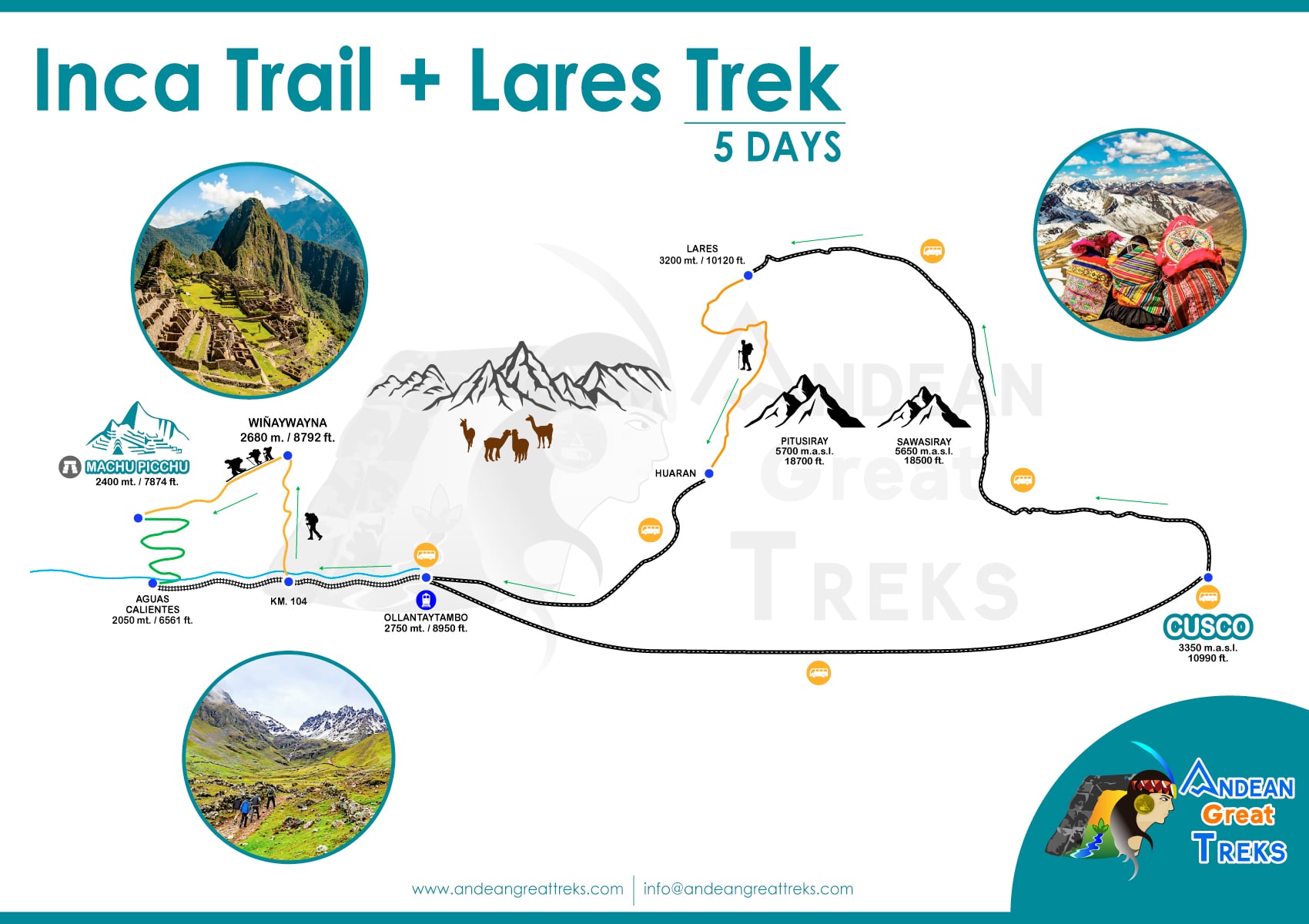 trip overview
included
Trip Highlights
activities
accommodations
itinerary
packing list
faq
essential trip information
best season to travel
price & availability
reviews
Reserve Online
trip overview
included
Trip Highlights
activities
accommodations
itinerary
packing list
faq
essential trip information
best season to travel
price & availability
reviews
Reserve Online
 CREATING AUTHENTIC TOURS IN PERU
CREATING AUTHENTIC TOURS IN PERU

This tour combines the best of the Andean traditions and original indigenous villages, and the exotic inca trail hidden by an lush cloud forest, that looks like lost in the time. Embark on an incredible Cusco Andean exploration through Lares trek with a taste of the iconic Inca Trail hike to Machu Picchu in 5 Days. Take a guided tour through the Sacred Valley of the Incas, stopping at a women’s weaving in Calca, before beginning your hike. The Lares Trek might not be as touristy but it’s no less breathtaking with scenic views of lagoons, the snow-capped mountains of Chicon,Sawasiray, Pitusiray, andean flora, and opportunities to meet local Quechua people along the way.
The Lares Trek & Short Inca Trail hike to Machu Picchu includes many Inca ruins, such as, Ancashmarca, Unu Urqo, Ollantaytambo, Chachabamba, Wiñaywayna and of course the sacred citadel of Machu Picchu. On day fourth you will hike a ancient inca trail to Machu Picchu surrounded of beautiful orchids, pristine waterfalls, and exuberant cloud forest and breathtaking scenery.
The Lares Trek is challenging, because of the level of the walk. The second day is the hardest because an ascent of the highest pass is made (4650 meters), and then descends down a steep slope. The weather is quite cold the first three days, during the winter season (May-August). On the fourth day when the route of the Inca trail is cut short to Machu Picchu there will be some heat, the maximum height will be 2700 meters. We recommend that participants do physical exercises, such as running, biking or moderate walks, and adapt to heights at least 2 days before Lares Trek.
Lares Trek Camping Tents: 2 nights
The overnight stays during the Lares Trek are made in double-roofed tents, which are installed by the accompanying team. The tents are equipped with thick foam mattresses that are carried by the horses. Sleeping bags can be rented on site for a fee prior to the start of the trek. On your lares trek you will have a tent with your portable toilet, in the camps, these are always clean and you can use at any time.
VERONICA View Hotel: 1 night
VERONICA View Hotel is located in Ollantaytambo and offers a bar, a garden and a terrace. The property has a restaurant, 24-hour reception, room service and free WiFi. There is free private parking and a car rental service. The rooms are equipped with a wardrobe. All rooms at the VERONICA View Hotel have a work desk and a private bathroom. A continental breakfast is served at the property. The VERONICA View Hotel features spa and wellness facilities with an indoor pool and sauna.
RETAMA MACHU PICCHU: 1 night
The Hotel Hotel Retama Machupicchu is located, 700 meters from the hot springs of Machu Picchu, it is the most beautiful and quiet area of the town, in the Wiñaywayna Park located three blocks from the Peru Rail station, overlooking the river and the moutains; It offers free WiFi and a tour desk. The accommodation offers luggage storage and a currency exchange service. Room service, 45-inch plasma AOC TV, 24-hour hot water, Hair dryer, Towels for thermal baths, Buffet breakfast.
Our guide will pick you up from your hotel in Cusco at 4:00 a.m. We will then travel in our private transportation toward the Sacred Valley of the Incas. We will make a brief stop in the village of Calca for breakfast and to purchase some items for the children we will encounter along the trek. We will then continue to the village of Lares, crossing the Amparaes Pass (4,500 m/14,764 ft) for another 2 hours and 30 minutes. Upon arriving at the trailhead, we will meet our muleteer and horses.
Once we reach the Lares hot springs, you will have the option to relax in the warm and therapeutic hot springs. These natural, mineral-rich pools are known for their therapeutic properties, perfect for relieving stress and preparing the body for the hike. After lunch, with renewed energy, we will begin our hike to Cuncani (3,900 m above sea level), our first campsite. The trek lasts approximately four hours, crossing valleys, mountains, and small high Andean villages. During the journey, we will observe local people going about their daily lives, wearing their traditional, vibrantly colored clothing and practicing ancient weaving techniques. We will also have the opportunity to see llamas and alpacas, emblematic animals of the Peruvian Andes, grazing in their natural habitat.
Upon arrival at the Cuncani campsite, our team will welcome you, and you will have time to rest and warm up before tea time. At this campsite, we will spend some time chatting with local children dressed elegantly in vibrant colors. The people are charming and welcoming. There you will have the opportunity to give them the gifts you have brought and also to purchase some of their handicrafts made from alpaca fiber. Later, we will enjoy our freshly prepared dinner, followed by a briefing for the second day.
Accommodation: Confortable Camping Tents
Included Activities:
Meals Included:
Today we wake up at 6:00 am with a cup of coca leaf tea. After a hearty breakfast, we begin our hike to the Sicllakasa Pass (4,780 masl/15,977 ft), with panoramic views of Chicón, San Juan, and Verónica mountains. This ascent will take four hours along a path with stone stairs. In some places, there are zigzag curves leading to the pass. Nearby, there are several piles of stones, which the locals call “Apachetas.” These are usually made by travelers who have passed through the pass as a symbol of gratitude and respect to the Apus (sacred mountains). Once we reach the pass, we honor the mountains with coca leaves, as is the local custom.
Enjoy the breathtaking views of parts of Moray, Maras, and Salineras. We then prepare for a two-hour descent along an Inca-era stone path, offering a beautiful view of the Sacred Valley. Today we will have lunch at the Pacchayoq site, which is surrounded by gigantic granite boulders and Queuña forests, considered the highest forests in the world. After lunch, we walk for another two hours, mostly downhill, and along the way, we will meet some local farmers in colorful clothing, as is traditional in all the villages surrounding the Lares Valley. We will enjoy stunning views of landscapes, snow-capped mountains, and herds of llamas and alpacas. Tonight we will sleep at a camp called Sutoq (4,100 m/13,451 ft), where we will have afternoon tea followed by a delicious dinner.
Accommodation: Confortable Camping Tents
Included Activities:
Meals Included:
After breakfast, we will hike downhill for 3 to 4 hours through the upper Pumahuanca Valley, passing numerous native Queuña trees, toward the village of Pumahuanca, located in the Sacred Valley at 2,950 m (9,678 ft). As we descend, we will observe the changes in flora, fauna, and temperature, and we will pass through magnificent forests of Chachacomo, Intimpas, and Lambran. Our guide will explain in detail the use of many plants in these areas as part of natural medicine. After two hours, we will arrive at the ruins of Inka Kancha, which was used as a control center for travelers. After lunch, our transportation will take us to the camping area in Ollantaytambo, where we will spend the night.
Accommodation: Confortable Camping Tents
Included Activities:
Meals Included:
By this stage on your trek, you will have really gotten into the swing of things. Fully motivated and raring to go, early in the morning we take our train to 104 kms (2,100m/6,927ft). At 8:00 am we begin our trek, passing the first checkpoint. Afterwards we initiate a moderate climb for three hours to the magnificent archaeological site of Wiñayhuayna. (2,650m/8747ft). Once there, we notice the weights lift off our shoulders, as we take in the spectacular views of the Urubamba Canyon, the stunning Inca sites around us, and the connection to the traditional four day Inca Trail. We continue onward towards the Sun Gate, (2,730m/9,007ft) where we take flight with excitement as we get our first spectacular view of Machu Picchu in all its brilliance and its majestic monumentality. Your destiny awaits you, just one more hour downward, to the Citadel of Machu Picchu,where we can take some pictures, then we will take the bus down to Aguas Calientes town, where we will spend our last night in hotel.
Accommodation: Hotel in machu picchu pueblo (1 night)
Included Activities:
Meals Included: Lunch, Dinner
This day the tour in Machu Picchu will take place early in the morning, after getting ready at the hotel, we will take the bus at 5:30 am. After a trip along the road surrounded by vegetation and impressive views of the Putukusi mountain, we will arrive at the access point for the sacred sanctuary of Machu Picchu.
First, before passing the control, those who wish to use the toilets will be able to do so. Since there are no bathrooms inside Machu Picchu, if you are going to go outside once inside, unfortunately you will not be able to re-enter.
Our visit to the wonder of Machu Picchu will be through circuit number 2, since it is one of the most complete. On this tour you will be able to go up to the famous guardian’s house from where the postcard photo of Machu Picchu will be taken, then you will pass through the main gate, the ceremonial plaza, the Inca’s house, the ceremonial fountains, you will see the temple of the sun, but not up close; You can also access the pyramid where the sundial is located.
Continuing with the circuit you will arrive at the sector of the sacred rock, and finally you will visit the urban area where the royal houses of the Inca nobles were, and also the room of mirrors. After 3 hours of travel we will retire with our guide, and once outside you can have a drink or food. Because inside the complex is prohibited.
Then you can take the bus down to the town of Aguas Calientes, where you will have enough time to have your lunch. At 2:30 p.m. it will be the time of the return train to the Ollantaytambo station, where your return transportation to Cusco awaits you, arriving at approximately 7:00 p.m.
Included Activities:
Meals Included: Breakfast
When packing for your Lares trek, you should keep in mind that it is best to dress in layers due to the weather variation. The variety of clothes that you must pack to dress in layers is key to your walk, from the morning when it is quite cold until mid afternoon when the temperatures rise and reach their peak and then freeze again at night. Stratification is also useful as you ascend high passages that are exposed to winds or descend into shady valleys.
Effective stratification only works if each layer allows moisture to pass and escape into the external environment. In fact, the best layered clothing, such as wool, promotes moisture transfer through its absorbent properties. Cotton and denim absorb moisture and, therefore, should be avoided.
 warm jackets
warm jackets
 Hydration bladder
Hydration bladder
 wool socks
wool socks
 camera
camera
 scarf
scarf
 first aid kit
first aid kit
 hiking shoes
hiking shoes
 Dry bags
Dry bags
 Trekking Poles
Trekking Poles
 sun cream
sun cream
 Snack
Snack
 sun hat
sun hat
 bathing suite
bathing suite
 rain coat
rain coat
 Sandals
Sandals
 insect repellent
insect repellent
 Passport
Passport
 Down Jackets
Down Jackets
 toilet paper
toilet paper
 daypack
daypack
 Wool cap
Wool cap
 head lamp
head lamp
 gloves
gloves
 sun glasses
sun glasses
 cap
cap
 extra cash
extra cash
 Trekking pants
Trekking pants
The 2 day Inca Trail hike to Machu Picchu is the most famous trek of South America. Experts have described it as one of the 5 best treks around the world.
2 Day Inca Trail hike to Machu Picchu is as incredible as any other hike since it has everything to amaze you. For example, the lush landscapes, the unique flora, and fauna will leave you breathless. Majestic monuments that hide Inca mysteries, stunning landscapes surrounded by mountain ranges from where you can observe the Wiñay Huayna. There are plenty of things that you will appreciate in a 10 km or 6,3 miles hike.
The icing on the cake comes at the end of the hike when you visit Machu Picchu, the Mysterious “Lost city of the Incas” and Wonder of the world. There is no doubt that the 2 day Inca trail to Machu Picchu is a wonderful hike, not complex but full of unique adventures you will treasure forever.
The main starting point of the Short Inca Trail hike to Machu Picchu 5 Days Network for the conventional journey of 5 days and 4 night. It is located at the Chachabamba checkpoint km 104, Machu Picchu district, Urubamba province, Cusco region.
The Inca Trail, or Capaq Ñan, is one of the most classic treks in the world. It was built by the Inca emperor Pachacuti to connect Cusco, capital of the Inca empire or Tawantinsuyo with the sacred citadel of Machu Picchu. Hiram Bingham, archaeologist and Yale professor who discovered Machu Picchu in 1911, was also the one who discovered the Inca Trail, as well as all the archaeological sites along its length. This route opened for trekking in 1970, by the Peruvian archaeologist Victor Ángles.
Every year, thousands of visitors from all over the world arrive in Peru to travel this famous road.
Through the 2 day inca trail hike you will realize that you will go through different microclimates and heights. That will allow you to appreciate the biological diversity of nature in its greatest splendor.
The Short Inca Trail starts at 2,000 metres and ascends to 2,700 metres at the Sun Gate, before descending to Machu Picchu which sits at an altitude of 2,400 metres. The guides carry basic medical supplies, but as you will be in remote mountain areas, more advanced medical facilities are not available.
The permit or entrance for the Short Inca Trail to Machu Picchu includes the entrance to the citadel of Machu Picchu. But, not to the additional hikes that can be found outside the main esplanade.
For example, the entrance to Huayna Picchu has an extra cost of USD $ 80.00 per person. As we mentioned earlier, the permit includes the entrance to Machupicchu. Therefore, to obtain one of these additional tickets it is necessary to buy new entrance tickets.
The visiting time in the citadel of Machu Picchu is an average of 1 hour and 45 minutes to 2 hours. This time is the maximum that is used to be able to make the main circuit that contains the most outstanding sites of the Historic Sanctuary.
You should know that there is no free time to visit on your own after the guide. Unless you buy one of the extra hiking tickets (Huayna Picchu or Machupicchu Montaña) so you can re-enter the attraction.
Huayna Picchu: The average time is 1 hour up and 45 minutes down. The path is steep and has small steps, so traveling with minors is not a good idea.
Machu Picchu Mountain: The average time is 1 hour and 30 minutes up, and about 1 hour down. It is more recommended for people traveling with minors. This option is not so recommended, since on the first day of hiking you will walk along part of the path that leads to the top of Machu Picchu Mountain.
Also, once arrived at the town of Aguas Calientes on the first day. You will have the opportunity to leave your belongings at the hotel reception or storage before going to Machu Picchu on the second day. And on your return to Aguas Calientes, before taking the train back to Ollantaytambo, you must pick it up.
You should not forget the restrictions that exist for entering Machu Picchu. Among them is the prohibition of luggage or backpacks that exceed 8 kilos or measures 40 x 35 x 20 cm.
The state provides a place where you can store your belongings at no cost. There is also another place, but it has a cost of S / 5.00 per person. Most visitors prefer to store in this second option, since they think that if they pay, it is because there will be much more security than the one that is free. However, both places are suitable for storing your things.
NOTE: Both Storages are located at the entrance to Machu Picchu.
Above all, one of the things that every traveler should know and pay attention to on the Inca Trail route is the ‘regulations’. That the entities in charge such as SERNANP and DDC-Cusco provide us with. In this understanding, we will mention some of the main ones:
Huayna Picchu is one of the most requested tourist attractions by visitors from all over the world. The entrance ticket to this place includes the entrance to the Inca Citadel. This ticket allows you to know both tourist attractions in just one day.
If possible. The Machu Picchu + Huayna Picchu ticket is designed so that the visitor has enough time to visit ‘Machu’ and ‘Wayna’ in 1 day.
The ticket has 3 shifts that give the tourist time to fully enjoy the Wonder of the World.
The first group enters Machu Picchu at 6 a.m. The second, at 7 a.m. The third, at 8 a.m.
All schedules allow a maximum of 6 hours to visit Machu Picchu and Waynapicchu. If you visit the so-called Temple of the Moon of Huayna Picchu, the time is 7 hours.
Both the ascent and descent through the Huayna Picchu mountain take an average of 1 hour and 30 minutes.
The ascent time depends on the physical condition of the tourist.
In Huayna Picchu you can visit the Temple of the Moon and have an incredible experience at the top.
This is the ideal place to get the best photographs of the Inca City. A suitable visit takes 3 hours.
The tour of Machu Picchu delays the time of the tourist guide. This takes 2 hours on average. Today it is mandatory to enter the Inca City with a guide.
The visit includes a tour of the main tourist attractions of the place, such as: the Temple of the Condor, the Temple of the Sun, the Main Temple, the Intihuatana and more.
The visit will also leave time for the tourist to appreciate the Wonder of the World on their own.
There are 3 entry times where the 400 daily tourists who enter Machu Picchu and Huayna Picchu are distributed:
Group 1:
Group 2:
Group number 3:
TIPS FOR VISITING HUAYNA PICCHU IN GROUP 1
TIPS FOR VISITING HUAYNA PICCHU IN GROUP 2
TIPS FOR VISITING HUAYNA PICCHU IN GROUP 3
IMPORTANT TIPS ABOUT MACHU PICCHU AND HUAYNA PICCHU
The Short Inca trail hike to Machu Picchu has a moderate difficulty level and we classify as difficulty in # 3 from #1 to #5. It demands a good physical condition since it starts early from Cusco and also you can start from Ollantaytambo, then a train trip to Kilometer 104 on the way Cusco – “Aguas Calientes” route.
The travelers will start the hike for approximately 5 to 6 hours on ascending Inca roads and then on Inca steps surrounded by abundant flora and fauna until reach the 400 steps that cross the archeologic site of Wiñayhuayna which demands good physical condition.
Then from there continue with the last part of the Classic Inca trail of 4 days for about 1 hour then will reach the sun gate (Intipunku) and finally the next day we visit Machu Picchu and finish with the guided tour in the citadel of Machu Picchu and enjoy the sunset in your Machu Picchu tour.
DIFFICULTY OF THE INCA TRAIL TO MACHU PICCHU
Andean Great Treks is rating our level of difficulty on a scale of 1 to 5 by placing Our tours in the box:
Difficulty level from: 1 to 2
It is that tour that does not require any preparation and does not demand physical activity, in general, the entire tour is done by transport and there are very few walks and any tourist could do the tour. We can suggest the following tours:
Difficulty level: 3
They are those routes that demand a moderate degree of difficulty since they demand physical activity, they are usually 1 day of walking at heights that exceed 8000 feet above sea level, generally this level of difficulty is found on the 1-day Inca Trail, the 2 -Day Inca Trail, the hike to Huayna Picchu, the hike to the Machu Picchu mountain.
That is because they have many steps of different sizes that were built by the rugged geography, we also have some trekking destinations in the Peruvian Andes, so we suggest having a moderate preparation or an active life to have a great experience on your trip to your holidays.
We can suggest the following tours:
Difficulty level: 4 and 5
Those routes that demand a lot of physical activity and adequate preparation and require a very good physical condition. These routes are usually walks that go from 3 days to 7 days, where you walk every day between 6 and 7 hours where it is done for more than 1000 meters and also descends hundreds of meters down very steep steps.
It is suggested to have a preparation at least 2 months in advance with activities that help to strengthen the muscles of the legs with a good technique to hold your breath as these tours generally cover heights of more than 14,000 feet above the mountains in very rough terrain and very low. temperatures as well as very high temperatures. Generally, these tours are the 4-day Inca Trail, the Salkantay Trek, Lares Trek, Choquequirao Trek and others.
We can suggest the following tours:
In reality, there are no age restrictions to do this magnificent hike. But, according to the type of terrain that can be seen on the route, we can say that the best is from 15 years old to 55 years old. As long as you are in good physical condition.
On the other hand, if you travel with a minor, you may be forced to hire a personal porter. So you can walk along with him and help him carry the weight of his backpack. This additional service will have an additional cost, which you can consult with your travel agent. Remember to ask about this on the day of your briefing.
This point is going to be an important factor that will help you decide if you are really ready to take the hike. Or if you need to do some previous training. To face normally the types of terrain that you will find on the way to Machupicchu.
Being able to take a few sessions of activities that work your legs, arms, heart, and back will be good. The wisest thing to do is to get into physical preparation an average of 2 or 3 months before your travel date. Performing exercises that improve our breathing is also essential. It will allow altitude sickness to not affect us so much on the trip.
It is advisable to arrive days before the starting day of the trek to be able to adapt in a better way to the climate of Cusco (3400 masl). You can start by arriving in the city of Lima, staying a day or a few more, depending on your availability.
Otherwise, arriving two or three days in the city of Cusco before your trip will be enough for you to acclimatize. And get to know some places in the surroundings of Cusco, in this way you will avoid altitude sickness.
Most likely, you may have altitude sickness upon arrival in Cusco. If you are not used to being in places that are located at more than 3000 meters above sea level. Most people have a headache, shortness of breath, nausea, among other symptoms of soroche.
This is certainly not something you shouldn’t worry too much about, as it is a common thing for travelers. And obviously it has a solution if you pay great attention to the recommendations to solve your ills.
Here we will mention some tips that will help you avoid altitude sickness:
Yes, there are bathrooms during the Short Inca Trail hike to Machu Picchu. But you should keep in mind that you will only find in the following points:
However, in the first two mentioned places of the Inca trail Cusco. They have no entry cost, they are free. But, at the entrance gate of the citadel of Machu Picchu you will pay.
There is no drinking water on the first day of the Short Inca Trail hike to Machu Picchu. On the other hand, some agencies provide bottled water. There are others that do not provide this extra. Therefore, it is recommended that each person bring their bottled water or a canteen with water.
But, on the second day of the Inca trail to Machu Picchu, you can find stores where you can buy bottled water. And you can also get it at the hotel you stay.
Remember that even though this tour is two days, you are only hiking for one day for six hours total, including some stops. The morning is mostly gradually uphill the entire time, so it will be tiring but well worth it when you get to Wiñay Wayna for lunch-time. Just remember its one foot in front of the other, look up at the spectacular views and enjoy it. After lunch, its an easy going hour to the Sun Gate (Inti Punku). Then another easy hike to the bus that will tak you down to Aguas Calientes.
We always recommend light hiking boots, but if you prefer sneakers, especially for the one day hike, this is ok as well. Please make sure they have good soles.
It will depend a lot on the conditions that the Ministry of Culture sends us each month in the rainy seasons where the operations of the Inca trail of 5 days will be carried out, we refer to the months of (December and January). Since there are years in which greater rainfall occurs. In these events the access to the Inca trail of 2 days can be closed.
Another very important fact is if you would feel very comfortable doing the walks under a rainy storm, or you should also evaluate that in the guided circuit in the citadel of Machu Picchu, there will be days when you cannot see much, due to to the mists. For all this we recommend avoiding doing the Inca Trail in the rainy months (December, January and March), because you will not have a fabulous experience of the best attraction in Peru.
The Short Inca Trail hike to Machu Picchu is a great option for those who are short on time, money or don’t have the fitness/stamina levels to hike the full Inca Trail. You still get to enjoy all the best bits of the classic Inca Trail: catching your first glimpse of Machu Picchu from the sun gate, spectacular Andean scenery, Inca ruins and a feeling of accomplishment when you arrive at Machu Picchu for the first time. But you don’t have to hike for four days or spend the night camping.
The Short Inca Trail hike to Machu Picchu involves an early bus and train ride from Cusco, followed by a three-four hour uphill hike to the spectacular Inca ruins of Wiñay Wayna. From there, you have a packed lunch before continuing for around two hours to reach the Intipunku (Sun Gate) where you get your first glimpse of Machu Picchu. The trail then descends for about an hour and a half to reach the ruins. Rather than visiting Machu Picchu straight away, you take a bus to the nearby town of Aguas Calientes where you spend the night in a hotel, then return to the ruins the following morning for a guided tour. In the afternoon of the second day, take the train and coach back to Cusco, arriving in the evening.
It’s a lot of walking to cover in a day, and at high altitude, but it is achievable if you have a good level of fitness. There will always be slower and faster walkers in your group but your guide will adjust his or her walking pace to make sure that everyone in your group is happy. The toughest part of the day is the three-hour walk uphill at the start, climbing rapidly from the Urubamba River to the Wiñay Wayna ruins. The Short Inca Trail to Machu Picchu may not be suitable for those who suffer from vertigo.
The Short Inca Trail hike to Machu Picchu stretches from Chachabamba at km 104 on the Urubamba River to Machu Picchu, over a distance of nine miles. The total walking time on the first day is around seven hours, split up into three main sections with lots of rest breaks. On the second day, you have most of the day to explore the ruins, before catching a train and coach back to Cusco in the afternoon.
Entrance fees to the Machu Picchu Historical Sanctuary and the Short Inca Trail are included, as are the transfers. The transfer to the start point of the trail is by bus and train. The bus trip down from Machu Picchu to the train station and the journey back to Cusco in the Expeditioner train is included. In Cusco you will be transferred to your hotel. A packed lunch is provided for the hike. If you want other snacks during the trail, these can be bought in Cusco. Lunch on the second day is not included and you can buy this in a restaurant in Aguas Calientes.
From April to October, it is usually warm and humid during the day (around 20-25ºC) and night time temperatures are around 15ºC. The dry season lasts from March to November, when the weather is more changeable. During the wet season, from December to February, it can rain heavily, although it can also rain year round.
If you like the idea of arriving at Machu Picchu on foot but do not want to walk for four days to get there, our Short Inca Trail is a great option for you. Alternatively, if you want the full experience of camping and hiking through jaw dropping scenery for four days, opt for the bucket list Classic Inca Trail.
Of course, there are other ways of getting to Machu Picchu too. Take the train through the Andes, with stunning views of the snowy peaks as you descend the beautiful Urubamba Valley, or upgrade to the luxurious Sacred Valley train, a charming period train with an observation car, outdoor deck area and elegant dining carriage where three-course meals are served. Less well-trodden than the Inca Trail, the five-day Salkantay Trail is a fantastic option for those seeking a more ‘off the beaten track’ experience, with mountain passes and high altitude jungles taking you to the backdoor of Machu Picchu
The climate in Cusco is well known for its two seasons of climates during the 365 days of the year. Obviously within these two, you can appreciate the microclimates that exist in each place depending on the altitude where you are.
Also, in this understanding, the climate in Machu Pichu that will be witnessed during the journey, will be varied. Since we will go from 2200m.s.n.m. up to 2680m.s.n.m.
RAINY SEASON:
It includes from the month of November to April. It reaches temperatures on average, a maximum of 23 ° C and at least around 6 ° C. With average annual rainfall of 160mm. In these months, the skies are cloudy due to humidity, which reaches 91%. Also, the presence of the sun is unpredictable.
DRY SEASON:
It includes from the month of May to October. Its minimum temperature is -1 ° C, reaching a maximum temperature of 22 ° C. There is an average annual rainfall of 60mm. In addition, the skies are clear and the percentage of humidity that reaches is 70%.
The high-mountain region of Cusco has well-defined winter and summer seasons. Winter days (June – August) are very sunny, dry, and warm, but the temperature drops to near freezing at night. Summer (January to March) is characterized by rain. December and January are two of the nicest months for trekking with only occasional rain shower while observing blooming flowers.
The heaviest rainfalls usually occur between January and March
October is still dry, but colder, with temperatures dropping to 0 degrees at night.
2 Day Inca Trail Hike Weather
The rainy season from November to April gives the feeling of a tropical downpour. Heavy rain, but rain showers usually do not last long or rain is often at night.
From May to September (which is the high tourist season), temperatures alongside the 2 day Inca Trail to Machu Picchu range from 20 – 35º C during the day when is sunny to 10 – 20º C during the day if it is cloudy and 5 – 15º C at night (either spend in the Aguas Calientes Town or the Puente Ruinas campsite). At Wiñaywayna and Machu Picchu, where altitudes are lower, temperatures are usually warmer (warm clothes are still recommended at night, anyway).
February – the 2 day Inca Trail hike to Machu Picchu is closed due to maintenance all the month which falls into the so-called “low season”. At that time, you can still enjoy hiking to Machu Picchu though. For instance, you might do the Salkantay Trek, Short Salkantay trek, or the Lares Trek to Machu Picchu without struggling with crowds of hikers.
Landslides are an occasional problem. Although this was rare, it happened that visitors got stuck on Machu Picchu or between Aguas Calientes and Cusco, because a driver blocked the road. However, the mud was quickly removed and travel continues without further problems.
The Historical Sanctuary of Machu Picchu presents a great biological diversity that can be found along the Lares Trek & Short Inca Trail to Machu Picchu 5 Days. In the Inca Trail Hike, you will go through different forests such as tropical rainforest, pluvial tundra, montane forest, subtropical rainforest, very humid forest, tropical páramo.
Regarding the flora, you can find more than 300 different species along the inca trail to machu picchu. For instance, there are more than 300 species. Wildlife in the sanctuary is as wide as the flora since there are more than 400 different species living in distinct altitudes.
The extraordinary ruins of Machu Picchu, at an elevation above 2400 m, were among the most amazing creations of the Inca Empire at its height: its giant walls, terraces and ramps seem to have been cut out of continuous rock escarpments. This remote site lies on the eastern slope of the Andes on the upper reaches of the Amazon basin in a region exhibiting a rich diversity of flora and fauna.
There is an abundance of diverse and unique Inca Trail Wildlife in the Andean Mountains of Peru. More importantly the final destination of the Inca Trail tour brings you to Machu Picchu, which happens to be one of the most protected and preserved sanctuaries in all of Peru. The Inca Trail covers many different climates and topographies which in turn yields a variety of different ecosystems for wildlife to thrive in. This 26 mile stretch of the Classic 4 Days Inca Trail has more than 370 different bird species many in which can´t be found anywhere else on the planet. There is also about 50 different mammal species found here along with over 700 known different butterfly species. Chances are you will have a chance to glimpse some unique and beautiful wildlife while trekking on your 2 day Inca Trail tour.
A few of the most commonly observed bird species in these parts consist of the White-tipped Swift, the Versicoloured Barbet, and the amazing Collared Trogan. There is a section of the Classic Inca Trail as well that is known specifically as the “Zona de Osos,” or the Bear Zone. Along this section of the Inca Trail tour, although very rare, you may have the chance to observe the elusive and very peaceful Spectacled Bear. These bears are the last known species of short faced bears known to exist in the world today and are the only native species of bears known to exist in South America. Seeing one of these on the 2 day inca trail hike would be an amazingly rare gift.
Upon your arrival to the sacred Inca site of Machu Picchu you will notice a funny looking mammal wandering around the Inca site. These furry and long necked curious creatures are the famous Andean Llamas.
While hiking along your 2 day inca trail hike, make it a habit to look upwards towards the sky. Known as a symbol of good luck amongst trekkers, if you are lucky you will observe the largest known bird species on the planet, the Andean Condor. This bird has a wingspan of ten feet ten inches and can weigh anywhere from 17-33lbs. The Condor is an important symbol in the Inca ideology, representing the heavens. Since it is only found soaring over the highest peaks of the largest mountains, it was known to the Inca as the messenger of the gods. The Andean Condor nests at a breathtaking elevation of over 16,000 feet usually and only lays up to two eggs at a time. Along with being the largest bird species in the world, it also holds the record of having one of the longest life spans. The Condor will often time live up to 70 years or more. The majestic Condor is the national symbol of many South America countries including Peru, Bolivia, Ecuador and Chile.
The 2 day inca trail hike to Machu Picchu offers many unique chances to not only learn and explore human history and culture, but to observe some of the most beautiful wildlife on Earth. While trekking have your camera ready and make sure to be very aware of your surroundings. You never know what may be observing you!
The Machu Picchu Historical Sanctuary contains an impressive diversity of avifauna for such a compact area. This is due to the rapid succession of climatic zones in the Sanctuary. In Machu Picchu we find altitudes ranging from above 6,000 meters to 1,725 meters, from high puna grassland to humid subtropical cloud forest. Many bird species in the Andes have relatively small altitudinal ranges, and each habitat has species found in no other zone. Coupled with the microclimate created by the Urubamba Gorge, this creates great diversity—and a paradise for the birdwatcher.
As of 1995 approximately 375 species of birds are known in the sanctuary, of which around 200 can be readily observed while walking the Inca Trail. Without doubt further observations in remoter corners will add yet more species to this impressive list.
While doing the 2 day inca trail hike, stay alert for sightings whenever crossing subtropical woods, for there is where birds mainly fly, hunt, build their nests, flock and so on. Those woods house a wide variety of species, surely a great adventure for everybody with a penchant for natural exploration!
Also, birds can be found along the paths, unexpectedly. One insider advice is trying to walk not so fast, in silence and paying attention, thus not scaring them, they of course will take off as their instincts signal possible danger of being hunt and eaten. Biological evolution of course always goes on the direction of preserving life and multiplying it.
Bird-watching can be so wonderful indeed! Spotting one standing on a branch, seeing its colors, shape, size, listening to its tweets, understanding its behavior, taking pictures and so on can be such an added reward for an already great experience the 2 day inca trail hike.
Along this top tour, ornithology lovers can find several kinds of parrots, doves, hawks, motmots, hummingbirds, the national bird of Peru called the rock rooster (of an intense red and black plumage) and more. The 2 day inca trail hike offers you this wonderful experience.
Many species of Finches flit amidst the bushes and cacti, and Scarlet-fronted Parakeets wheel noisily overhead, easily visible with their bright green plumes, until they alight on a tree and seem to disappear, perfectly camouflaged in the foliage. Brightly-colored Hummingbirds compete for nectar where cacti and shrubs are flowering—Sparkling Violetears, Green-tailed Trainbearers, .Bearded Mountaineers and the world’s largest Hummingbird, the Giant Hummingbird. Be sure to get out early to see the birds, because there are few to see by 11:00 a.m., except for a brief preroosting flurry before dark.
Moving to higher altitudes we reach the bleak grasslands known as the puna. At dawn it is cold and as the sun rises it is easy to see many birds feeding as the temperature rises. Terrestrial Flycatchers known as Ground-tyrants fly from rock to rock in search of flying insects, and flocks of brightly-colored Yellow-finches spring out of the ichu grass as the shadow of a Mountain Caracara passes.
A short walk here will produce encounters with strangely named birds such as Cinclodes, Puna Ibis, Sierra-finches and Canasteros. Due to the abundance of diurnal rodents at this altitude (it is too cold for them to be nocturnal) there are many birds of prey, including the Puna Hawk, Cinereous Harrier, and Black-chested Buzzard-Eagle. Master of his environment, the Andean Condor soars majestically on wind currents, often traversing many miles without a single flap of his wings. Despite its grandeur the Condor is strictly a carrion eater; it is incapable of grasping prey with its chicken-like feet.
On sheltered slopes, usually above 3,800 meters, grows polylepis woodland. This habitat is extremely endangered due to cutting for firewood, yet contains some of the world’s rarest birds. These forests are usually isolated from other forest types and surrounded by puna grassland. Birds in this habitat include the White-browed Tit-spinetail, Tawny Tit-spinetail, Royal Cinclodes, Ash-breasted Tit-tyrant, Giant Conebill and an assortment of high-altitude Hummingbirds. Line-cheeked spinetails probe the mossy trunks and d’Orbigny’s Chat-tyrants flit from tree to tree. Polylepis forest is hard to get to, but rewarding once reached.
But it is in the cloud forest that the birdlife reaches its greatest diversity. This is the forest found in the lower Urubamba Gorge (where not deforested) and the final two days of the Inca Trail. Here birds can be seen in mixed feeding flocks, as many as thirty species together. A morning of birdwatching in the misty cloud forest may produce many of the following: Cock- of-the-Rock, Brown Tinamou, White-rumped Hawk, Andean Guan, White-throated Quail- Dove, Andean Parakeet, Scaly-naped Parrot, Collared Inca, Violet-throated Starfrontlet, Great Sapphirewing, Chestnut-breasted Coronet, Sapphire-vented Puffleg, Amethyst-throated Sunangel, Tyrian Metal-tail, Rufous-capped Thombill, Golden-headed Quetzal, Crested Quetzal, Masked Trogon, Gray-breasted Mountain Toucan, Ocellated Piculet, Crimson-mantled Woodpecker, Crimson-bellied Woodpecker, Spot-crowned Woodcreeper, Azara’s Spinetail, Marcapata Spinetail, Scribble-tailed Canastero, Pearled Treerunner, Streaked Tuftedcheek, Montane Foliage-gleaner, Buff-throated Treehunter, Variable Antshrike, Undulated Antpitta, Rufous Antpitta, Unicolored Tapaculo, Green and Black Fruiteater, Barred Fruiteater, Red-crested Cotinga, tyrannulets too numerous to list, flycatchers, tanagers, Green Jay, Mountain Wren, Inca Wren, Blue and White Swallow, Great Thrush, Andean Solitaire, Brown-capped Vireo, Dusky-green Oropendola, Mountain Cacique, Spectacled Redstart, and Slate-throated Redstart.
During the tour of the Inca trail hike to Machu Picchu we will see different types of roads (cobbled roads and dirt trails). Likewise, they cross the scattered forests of native trees, streams and mountain passes. For this reason, we must be very careful with our movement. Since, a misstep can mean a fall between low, intermediate and high risk.
Therefore, when moving, if we get to see a bird, we must first stop. After that, take our binoculars and quickly observe it, trying to remember the most striking characteristics of the bird. Finally, once that information is collected, we continue with our journey.
One of the biggest reasons why travelers on the Inca trail hike often have accidents. It is because they try to take pictures while walking. For this reason, they suffer injuries and falls, although it is not constant, some bird watchers tend to do the same. Therefore, we remind you to stop every time you want to birdwatch. First, stay in safe areas without blocking the passage of other travelers and above all avoid being distracted.
Binoculars are highly recommended equipment for bird watching on the Inca trail hike. However, if we do not have some, we can only use our eyes to help us. Also, to recognize the birds of the Inca trail. Maybe not with the same detail as if we used a pair of binoculars but it can be functional. Also, the recommended measure in case they have binoculars or can buy one is 10 * 42 or the closest to this measure. Since, his visual field and sight approach are ideal.
For our cloting (clothes). We must consider that most of them are subdued or muted colors. Because, using intense and / or flashy colors scare away birds such as: red, yellow, phosphorescent green.
If you are going on the Short Inca Trail hike to Machu Picchu , you may be surprised to stumble upon so many varieties of orchids along the inca trail trek!
There are a great diversity of orchids species in Perú, some restricted to their natural regions. They are epiphytic or terrestrial. They grow between 100 and 4,600 meters above sea level. Many of orchids species of Perú are in danger of extinction due to illegal trade and deforestation of their habitat.
There are literally thousands of orchid species in Peru, many of which are located in the low cloud forest eco-regions around Machu Picchu and along the famed Inca Trail Hike. It is estimated that as many as 50% of Peru’s more than 3,000 orchid species remain unidentified by science.
The diversity of microclimates in Peru allows a great variety of orchids. They have been appreciated since pre-Columbian times by the native cultures of Peru.
ORCHID CHARACTERISTICS
The Orchidaceae family is one of the largest among the superior plants and its distribution is worldwide; the described species are estimated at 25,000, distributed in 750 genera.
Their growth habits are very varied and can be separated into two large groups: epiphytes and terrestrial (within this group are lithophytes), including even an underground species (Rhizanthella gardneri), which grows in Australia. In the tropics most of the orchids are epiphytes and very showy flowers, while those of temperate zones are terrestrial and of little attractive flowers.
The orchid flowers are generally hermaphrodite and bilaterally symmetrical. In the vast majority of the flowers are made up of three external elements called sepals, two lateral and one dorsal, and three internal elements called petals, the lower one modified on a lip or lip, larger and more intense in color than the remaining.
The lip is often trilobed with fleshy ridges or a basal spur, and often with a completely different color pattern than the other two petals.
Orchids are a well-distributed and extremely varied plant family, often with fragrant, colorful and bizarrely shaped blooms. The Orchid family is one of the largest families of flowering plants, containing around 600 genera, and comprising approximately 10% of all seed plants. All orchids are myco-heterotrophic, meaning they form a relationship with fungi in the soil in order to get their nutrients. Because of their vibrantly colorful, often strange and perfumed blooms, orchids seem to possess a certain mystique that has captured the imaginations of humans from time immemorial. In fact, dedicated orchid horticulturists and enthusiasts have been known to compete, fight over and even commit crimes in the service of their obsession.
POLLINATION
Its flowers have great diversity in color, shape, size and smell, with the sole purpose of attracting pollinators, most of which are insects, which in many cases are specific to certain species. The flower has evolved to such a degree that some take the shape and smell of the female of the pollinating insect, in order to “attract” the male of the same species. Another developed strategy is to take on the appearance of a male insect, which, when “detected” by another male of the same species within its territory, is attacked and fertilization of the flower is achieved.
The seeds are very small and are produced by thousands and even millions for each fruit. This high production compensates the difficulties for germination, such as the lack of reserve substances in the seeds, its low viability and the need for germination of a type of fungus that provides nutrients until the plant is autonomous.
97% of the orchid species need a pollinator to carry out the transfer of the pollen grains from one plant to the pistils of another, in order to produce fertilization and seed formation. The pollen of orchids is grouped into compact masses called polynyas, in such a way that by itself, or by the action of the wind, the pollen cannot get from one flower to another, so pollinators are essential to ensure their reproduction.
These pollinators are very varied and, depending on the species, they can be flies, mosquitoes, bees, wasps, butterflies, beetles and birds, especially hummingbirds, which are in charge of collaborating with the reproduction of this beautiful flower.
Orchids are normally pollinated by bees, birds, wasps, moths, beetles, flies, etc. When the orchid opens, it emits aromatic essences, inviting and seducing some pollinators to land on the flower. In Machu Picchu there is a fascinating pollination, as it is a refuge for exotic birds, and more than 300 species of Butterflies, which makes pollination an incredible multi-colored spectacle, in one of the most impressive ecosystems on the planet, made up of covered mountains of abundant vegetation that in turn is home to numerous species of birds and mammals in danger of extinction, such as the spectacled bear and the sachacabra or pudú, the smallest deer in the world.
It takes three to seven months to mature, after this time it opens. Depending on the orchids species of Perú, each fruit can release up to four million seeds that, when released and dragged by air currents or transported by pollinators, manage to germinate if they reach a trunk or branch, giving way to symbiosis with the fungus of the germination, the first leaves appearing. After 5 or 6 years the orchid will reach its adult state, stage from which beautiful flowers will sprout for several years.
FEEDING
Another peculiarity of orchids is found in the roots, which are completely covered by a fluffy, creamy white tissue, called a canopy, which allows it a high uptake and moisture retention.
Orchids are mistakenly thought to be parasitic because they grow on other plants. In reality, the only thing they seek is to reach a maximum of light by locating themselves in the upper parts of the trees; In addition, the orchid feeds on the humus produced by the decomposition of the leaves of the trees and on the nutrients it can collect from the rainwater, never from its host.
WHERE SHOULD I LOOK FOR ORCHIDS?
The regions where orchids species of Perú can be found are those that have the cloud forest ecosystem, such as San Martín, Amazonas, Piura, Huánuco, Junín, Pasco and Cusco, according to Bravo Urtecho. “Where we find orchids most frequently are regions of the central jungle due to the cloud forest ecosystem.
Contrary to popular belief, orchids are not found in the predominantly hot places. Epiphytes and lithophytes grow on trees and stones, including many of the most spectacular species, which tend to concentrate where there is constant and strong rainfall and humidity during the growing season, allowing the forest to allow light to pass through. Diversity tends to peak almost everywhere at around 1500 meters in the tropical and sub-tropical world. Typically, the environment these species need is normally rocky and mountainous, and this is exactly the case in Peru.
The main center for orchids species of Perú is the mountain cloud forest, the point where the Andes end and the jungle begins. These areas of Peru can receive more than 5 meters of rain per year. In these areas diverse valleys unite, some more humid and others drier, as well as the climate itself, where the changes move from North to South. As a result, plants vary greatly, with altitude and valley.
THREAT
Peru probably has the greatest diversity of orchids worldwide, because we have a wide range of microclimates, which circumscribe species in highly restricted areas with very specific climatic characteristics, making it difficult for many species to grow outside their environment. natural.
Currently in Peru, the Orchidaceae family is highly threatened and with many species in danger of extinction, mainly due to two factors:
Selective depreciation of species, carried out for export purposes by commercial collectors
The massive destruction of habitats due to logging and migratory agriculture, which deforest about 300,000 hectares per year, thus exterminating not only orchids, but also the native flora and fauna of the place.
Obviously, the rainy season (November to March) is the best time to see orchids in Cusco Perú, especially in the cloud forest; which is an area outside the Inca Trail tour between 1,800 masl and 3,000 masl.
There are 425 varieties of orchids in Machu Picchu Cusco, including several new species for science.
There are more than 400 species of orchids in Machu Picchu Cusco, some of them originating from this natural area protected by the State and several are new to science.
The prestigious international magazine “Icones Orchidacearum” published in 2015 an article about the discovery of three new species unknown to science: “Epidendrum ochoar”, “Epidendrum inca huamani” and “Epidendrum mormontoy”.
Treks to see orchids in Perú:
Wiñay Wayna Orchid: (Epidendrum Secundum) found at Machu Picchu and along the Inca Trail, this is an orchid with multiple white to fuchsia blooms. Each flower is around an inch in width. Wiñay Wayna means “Forever Young”; Wiñay Wayna Pass on the Inca Trail takes its name from this flower. The orchid is pollinated by both butterflies and birds. Flower essences made from this orchid are said to preserve youth and vitality.
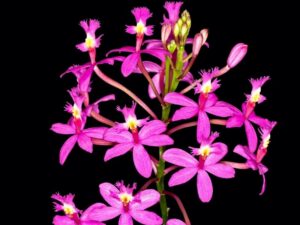
Paradise Orchid: (Sobralia Dichotoma) is one of the most common orchids in the region on the inca trail to Machu Picchu. This orchid has 5-8 flowers per stem, and is deep pink and white in color. It’s an ephemeral orchid, lasting for only a few days and blooming between February and April. Its essence is said to have a calming and grounding effect.
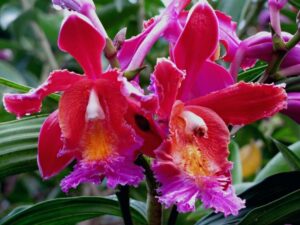
Waqanki Orchid (Masdevallia Veitchiana) This orchid’s common name in Quechua, Waqanki, means “ You will Cry.” This is a single-flower orchid that grows in crevices on rocks. It has orange sepals with purple spots on the sides. A Quechua legend recounts that an Inca princess’ forbidden love for a common soldier led to the creation of this orchid.
With beautiful petals in litmus; The great variability in the color and shape of its flowers means that no camera can capture it in all its splendor, being highly appreciated by growers around the world, which has earned it many international awards. Finding a beauty like this in its natural environment is part of the experience offered by the sanctuary of Machu Picchu and Inca Trail hike. It develops between 2,100 and 3,310 meters of altitude, of terrestrial habit and rarely epiphyte. It is used a lot for the creation of hybrid species. It can measure up to 20 cm long by 6 cm wide. The Waqanki orchid is considered a national treasure of Peru.
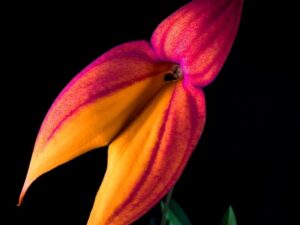
Cryptocentrum Inaequisepalum C. Schweinf.
This tiny species measures just 8 mm, its strange shape provides its name, which derives from the Greek meaning pointed tongue, it extends from Mexico to Brazil and Bolivia, it develops in rainforests and humid forests with temperatures from warm to cold, from sea level up to 2,600 meters of altitude.
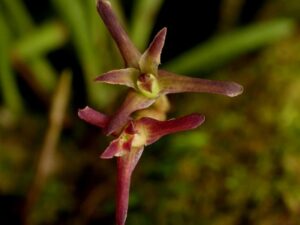
Kefersteinia Koechlinorum Christenson.
It is an epiphytic, medium, uniflora plant, like the tulip or magnolia, with 2.8 x 2.8 cm flowers. It can be perceived by its aroma similar to coriander. Its flowering lasts for 15 days. Discovered by the late gardener Moisés Quispe, (dragged by a huayco years ago) and can be found from sea level.
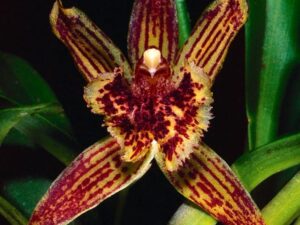
Odontoglossum Praestans Christenson.
Epiphytic orchid that spreads through countries such as Ecuador, Colombia, Peru (Cusco and Cajamarca) and Bolivia, we can find it between 1,700 and 2,100 meters of altitude. So simply beautiful that it inspires peace. It is found in the humid subtropical jungle and the humid sub-tropical jungle of the sanctuary. It can be found in bouquets of up to a dozen, with a scent between jasmine and roses.
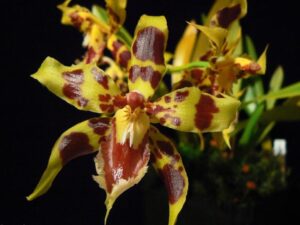
Maxillaria Alpestris Lindl.
This little girl is found growing as an epiphyte and lithophyte, in Venezuela, Colombia, Ecuador, Peru (Amazonas, Cajamarca, Pasco, Cusco, Puno) and Bolivia. In the Historic Sanctuary of Machu Picchu it is found from 2,060 to 4,150 meters of altitude, it develops in humid mountainous forests, growing in the form of a vine.
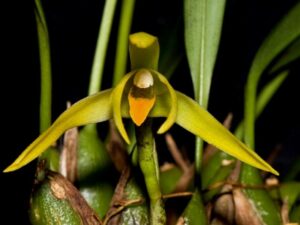
Cyrtochilum Minax
Endemic to the Historic Sanctuary of Machu Picchu, it blooms between August and October, it is found from 1,500 to 3,600 meters of altitude, especially in cloud forests with cold climates, it presents long-stemmed bouquets of few flowers, of 5 cm. long by 4 cm. Wide.
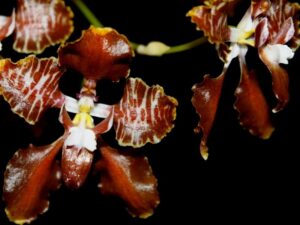
Chondrorhyncha Aurantiaca Senghas
Epiphytic plant from warm to cold areas, which extends from 500 to 2,400 meters of altitude, it is found in Peru and Bolivia, easy to find in the Historic Sanctuary of Machu Picchu. It develops in the humid subtropical forest and the humid sub-tropical premountain forest, it presents a single flower of about 10 cm. long, sprouting from the base of the plant simultaneously.
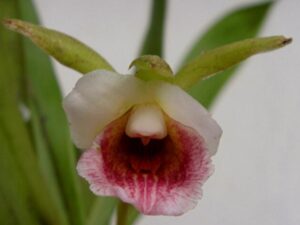
Bletia Catenulata
Variable in size with two to four lanceolate leaves. Formosa plant (presents spheroidal bulge), its flower varies from 4 to 5 cm. long, it has stems with about a dozen purple-pink to fuchsia flowers. The highest flowering is from January to February.
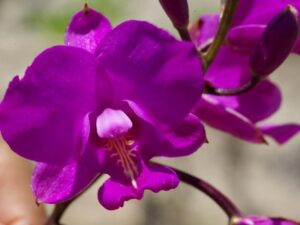
Oncidium Scansor
Epiphyte. Pseudobulbs: It has impressive bright yellow flowers with red-brown spots, they are 2 to 5 cm in size. long. Lip prominent, discoidal, unifoliate. Its flowering time goes from February to May.
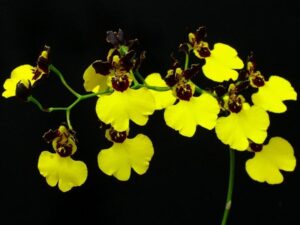
Phragmipedium Caudatum
Terrestrial and Epiphyte, with leathery leaves. Petals brownish-purple, large, some of them reach 20 to 80 cm. long. Two blooms a year have been reported, May, June and February. This is the largest orchid flower that exists.
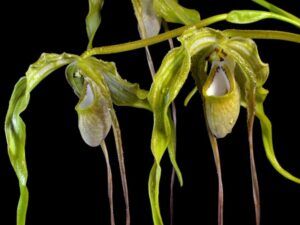
Prosthechea Vespa
Terrestrial, it has creamy red-brown speckled flowers with elongated pseudobulbs, two to three leaves; It has a size of 2 to 3 cm. long. The largest flowering is from November to April.
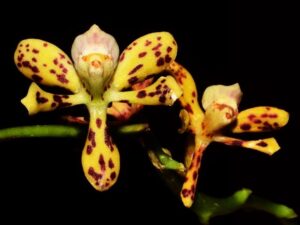
Pleurothallis sp
Epiphyte and terrestrial, quite smooth leathery leaves. With 1.5 cm long flowers, and creamy green to yellow on sepals and petals. Flowers from October to December.
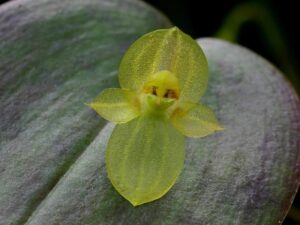
Ida Macrophylla ( Lycaste macrophylla)
Terrestrial and Epiphyte. Presents cavities, which give the sensation of grooves. Generally 2 to 3 leaves; flowers 6 to 9 cm. wide, dark brown sepals, petals and creamy white lip, its flowers are long lasting. Flowers from November to January.
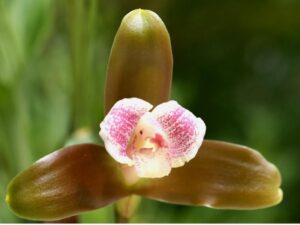
Anguloa Virginalis
Terrestrial, it has dark green pseudobulbs, ovoid, with two to three leaves. With a flower that measures 7 cm. long, white with purple-pink spots on the lip, sepals and petals. Flowers from October to November.
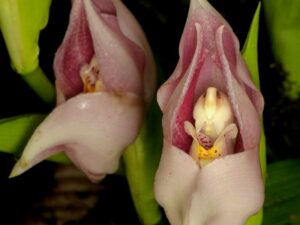
Telipogon Papilio
Clearly epiphytic. Short stem and oval leaves. It has a flower 4 cm long. Yellow-green sepals and yellow petals, with purple veins. Column with purple brown mushrooms. Flowers from April to June.
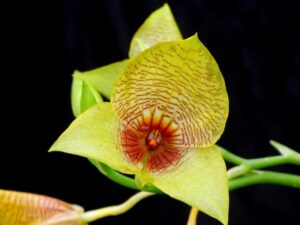
Masdevallia Karineae
Epiphyte or lithophyte. Sepals light purple to pale pink with purple spots. Large leathery leaves, up to 12 cm. long, white petals, with a flower that measures approximately 7 cm. long. New species for science. Flowers from December to January.
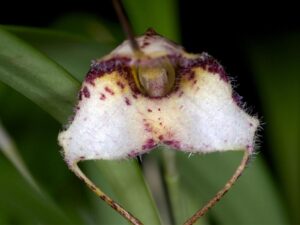
Hofmeisterella Eumicroscopica
Epiphyte. Inflorescence flattened, in racemes, acuminate linear leaves. It has a flower up to 2 cm long. Sepals and yellow petals. Yellow lip with purple veins. Its flowering stage goes from January to February.
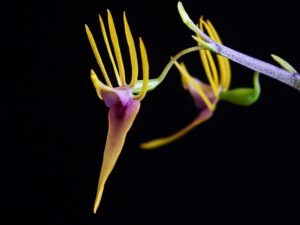
Comparettia Falcata
Epiphyte with cylindrical pseudobulbs, unifoliate leathery. With flowers up to 2 cm, with purple-pink to fuchsia sepals, petals and lip (with a noticeable spur). Flowers from December to March.
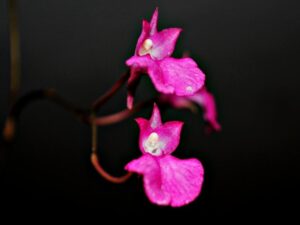
Masdevallia Marizae
Epiphyte. Leaves with prominent petiole, uniflora. With flowers of 6 to 7 cm. long; Whitish sepals with red-purple dots and veins. This species is new to science. It has beautiful white petals.
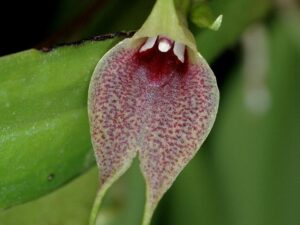
SOBRALIA SATIGERA
Also called “flower of a day” for its short duration and delicacy; It generally grows in the open or under very little shade, in rich, loose soil, somewhat damp. Restricted habitat. 8 cm.
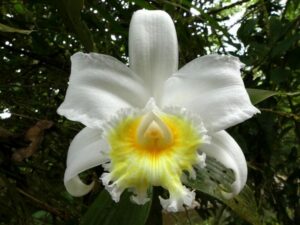
EPIDENDRUM FRIDERICI GUILIELMI
It grows in open places in rocky and mossy soil, with a somewhat restricted habitat, the flower is about 2 cm. Paqaymayu 2,300 masl.
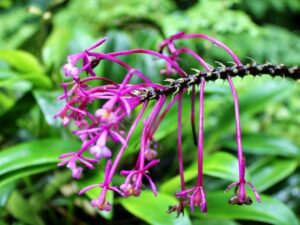
ELLEANTHUS AURANTIACA
It grows in sunny open places or under little shade; in moist and rich soil, forming considerable colonies; wide habitat; the plant exceeds one meter in height; the floral ear measures 10 cm. Wiñaywayna 2,500 masl.
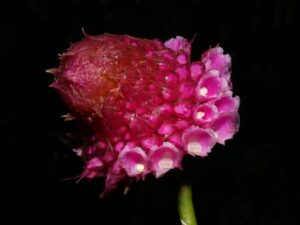
TRICHOCEROS PARVIFLORUS
It grows under the shade of sparse forest; on slightly mossy branches. Gives off an unpleasant odor; it is not very common in the Sanctuary. Restricted habitat. 2 cm. Patallacta 2,800 masl.
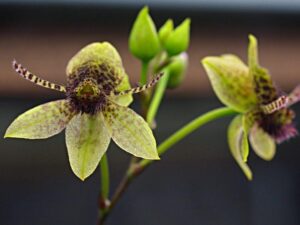
In the Historic Sanctuary of Machu Picchu, more than 700 species of butterflies have been registered (300 diurnal and 400 nocturnal). Many of these species are endemic and others migratory. Along the Inca Trail they can be seen through their fragile flights. These are very colorful: there are blue, yellow, white, red and even transparent wings.
The mysterious world of butterflies was present in the time of the Incas. These magical insects were present in his ideology since they were related to the “Hanan Pacha”, that is to say, the world above where the tutelary gods lived (the sun, the moon, the stars). Butterflies were related to the soul and longevity. A sample of this are some ceremonial plates, found in 1911 by Hiram Bingham.
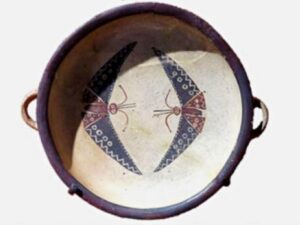
The butterflies of Machu Picchu date back more than 100 million years, and have adapted to the environment to survive. These butterflies are very important in Machu Picchu and along the Inca Trail as they help pollination of flowers.
Butterflies are both diurnal and nocturnal insects, they have extremely colorful wings. Their antennas allow them to pick up smells, sounds, and vibrations. Their eyes are made up of ommatidia that allow them to see at great distances. So they capture many colors. His eyes are green, blue and white.
Their long legs have joints through whose plants they capture different flavors. They are fed by their tongue, which has two tubes that function as taste sensors. These tubes wrap them around their head when they are not used.
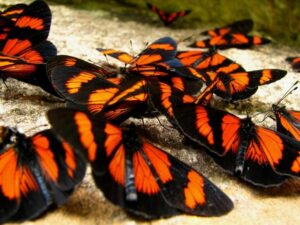
At Machu Picchu and the Inca Trail, butterflies have many predators, of which the most dangerous are birds. However, butterflies have been able to develop a defense mechanism, through their flight, that they do so quickly that they disorient the birds, at the same time that they secrete liquid substances with an unpleasant odor.
The spectacled bear is also called Andean bear because it inhabits the eastern region of the Andes Mountains in South America. In the Historic Sanctuary of Machu Picchu (an area protected by the Peruvian State) there is a population of approximately 70 bears. These are not easily seen, although sometimes they even roam the Inca city of Machu Picchu. The best occasion to visit their habitat is by doing the 4-day Inca Trail.
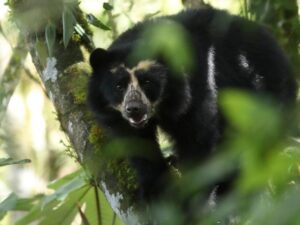
The Inca Trail to Machu Picchu takes 4 days in which visitors walk 39 kilometers. In the last two days of the hike you can see humid tropical landscapes where the spectacled bear lives. This peculiar animal is not aggressive. Likewise, if you spot one, it is recommended to keep a safe distance. In 2021 two spectacled bears walked through the archaeological site of Machu Picchu. In the town of Aguas Calientes there is a conservation center where you can observe these animals.
THE SPECTACLED BEAR
The spectacled bear (Tremarctos ornatus) is one of the eight species of bear in the world (the others are the giant panda, the Malayan, the black from Asia, the bezudo, the polar, the brown and the black from America).
It is known as ‘ukuko’ by the inhabitants of Cusco. It lives in a tropical Andean geography, between 500 meters to 4,500 meters of altitude. This animal prefers to live in the humid forests of the high jungle where there is a lot of rainfall (and fruits with which to feed).
In Peru there is a population of approximately 18 thousand spectacled bears. It is considered to be an animal in a ‘vulnerable situation’. In 1,800 square kilometers of land area, only 5,000 bears have been registered. Yet Peru has the largest spectacled bear population in South America.
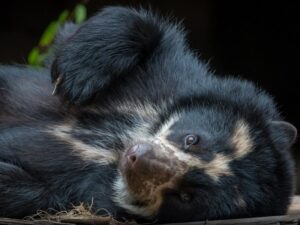
DESCRIPTION
The spectacled bear can measure between 1.30 and 1.90 meters tall (standing on its two legs). It has a large head disproportionate to its body. Its tail is small (it measures approximately 8 centimeters). Males are larger than females. They can weigh from 80 to 125 kilos.
It is considered a plantigrade because it supports the soles of its legs on the ground. It has five fingers, with very sharp claws, which allow it to climb trees with ease. It has a short brown muzzle.
The Machu Picchu Spectacled Bear has long, thick black fur. He has a few yellowish, circle-shaped spots on his face near his eyes. Because of this it has been given the popular name of the spectacled bear.
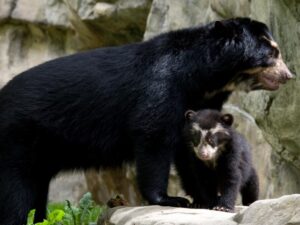
FOOD AND CUSTOMS
He is a vegetarian bear (only 5% of his diet is of animal origin). It feeds preferably on fruits, roots, cuts, leaves and fungi, insects, honey, eggs, rodents, among others.
It has solitary habits. They walk through wooded areas, climb trees, and mark their territory with scratches and scent. Trees are very important to them. It is there where they find their food and specific places to rest.
The female usually gives birth to two cubs. It is considered as a seed disperser and pollinator. He is a sullen bear. Scared easily. The Historic Sanctuary of Machu Picchu is one of the places where ‘ukuku’ can roam freely, although the possibility of being hunted illegally is not ruled out.
Although it is not frequent, on the route of the Inca Trail spectacled bears can be seen. If you see one of these animals, keep your distance with your group. Remember that bears are only looking for food. Don’t scare them away because they can act in self-defense. Follow the directions of the guide who will accompany you.
During the third and last day of the Inca Trail there are more possibilities to know the habitat of the spectacled bear. With a bit of luck, you can even see it walking through the trees of the place. Remember that these animals are protected by the Peruvian State. Therefore, their hunting is a crime.
Threats to the Spectacled Bear in Machu Picchu
In the Historic Sanctuary of Machu Picchu there is probably a population of 70 bears.
One threat is deforestation caused by forest fires and forest clearing. Another problem is poaching. The spectacled bear is considered a threat to livestock. They are hunted and taken into captivity as a circus attraction where they are mistreated.
How to protect it?
In 2009, amid the Inca walls of Machu Picchu, a spectacled bear and its calf could be seen. This came as a surprise to the visitors. Since the 1980s, up to four entries of these bears have been recorded in the park. Spectacled bears prefer to do it very early in the morning or after five in the afternoon.
During the Inca Trail it is advisable not to leave food on the route. This helps not alter your diet and eating routine. If you want to see spectacled bears up close in the town of Aguas Calientes (Machu Picchu town), there is a “Spectacled Bear Conservation Project” at the Inkaterra hotel.
This private conservation project together with the National Institute of Natural Resources (INRENA) rescued three bears: one that lived in a Cusco zoo for almost 21 years. The other was saved from a forest fire. The third was brought by a farmer who kept it as a pet.
Currently there are five rescued bears that are in custody and in the process of re-insertion to their natural habitat. The project accepts voluntary donations for the protection of the Spectacled Bear.
MORE INFORMATION
The spectacled bear, Ukuku or Ukumari, is present in oral traditions that tell that there was once a hairy young man who was the son of a bear’s love affair with a beautiful peasant woman.
The hairy young man is the Ukuku (a typical Cusco dancer who is especially related to the Qoyllur Riti festival). This festival takes place in the snowy Ausangate, near the city of Cusco. Today this religious festival is the largest pilgrimage in the Andes Mountains (it brings together more than 10 thousand people).
The Ukuku wears a suit made of black wool, a white balaclava and emits sounds similar to that of an animal because it is a mythical character. This dancer is also present in other traditional festivities of Cusco.
The birds of the Short Inca Trail hike to Machu Picchu km 104 are very picturesque and showy birds. Since, we can find many species of low jungle and high jungle of Peru. For this reason, they are mostly birds of beautiful colors and shapes.
After having enjoyed a relaxing train journey. We arrive at kilometer 104 of the Cusco – Machu Picchu railway. After disembarking from the train we start the walk towards the Inca citadel of Machupicchu through the “Cloud Forest” of the Inca trail. However, let us remember that this area has a considerable concentration of clouds and fogs. As a consequence, we will find ecosystems with a lot of epiphytism and climbing.
Along these 11 km of route on the short Inca trail to machu picchu we will find a large number of species. However, now we will mention the birds of the Inca trail km 104 that can be observed more frequently and we will include some iconic species.
TORRENT DUCK
Merganetta armata
We will find it at the beginning of our trek of the Inca trail km 82 when crossing the Urubamba river in the mighty areas. Probably alone or in pairs swimming against the current or standing on the rocks. Meanwhile, the male has a black and white striped plumage for the lower part of its body. Also ribbed in brown with black for the top. On the other hand, the female is dark scarlet in the lower part and striated in the upper part. In fact, it is easy to recognize since it is the only duck that we will find in this sector of the Urubamba River.
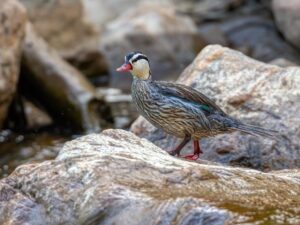
NEOTROPIC CORMORANT
Phalacrocorax brasilianus
Also, known as Cushuri, it can be seen quite frequently in the Urubamba River. Above all, in the lower current areas of the Inca trail, swimming or perching on the rocks. In addition, its plumage is black with a slender silhouette that is easy to recognize. On the other hand, there is no difference between the plumage of the male and the female (chromatic dimorphism). Rather, the juvenile is dull brown in color and is the only freshwater cormorant on the Inca trail.
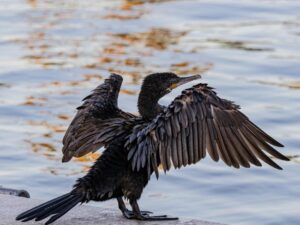
FASCIATED TIGUER HERON
Tigrisoma fasciatum
It is located on the banks of the river or on the rocks. In addition, it is unmistakable for the design of its plumage. Since, it is brindle with a white line that goes from the chin to the chest in the central part in adults. Meanwhile, juveniles are brindle brown. It is one of the few herons that climbs to these heights and is almost always seen alone.
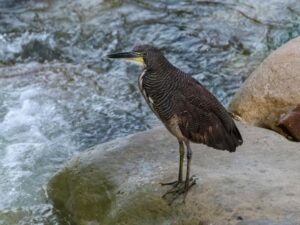
CINNAMON FLYCATCHER
Pyrrhomyias cinnamomeus
It is located in the upper parts of the humid montane forests of the short Inca trail. Also, go solo and couples. It measures only 13 centimeters. Consequently, we will see it in the surroundings of the Wiñaywayna camp. Probably perched visibly at the top of bushy areas. Thanks to its brownish color, it is unlikely to be mistaken.
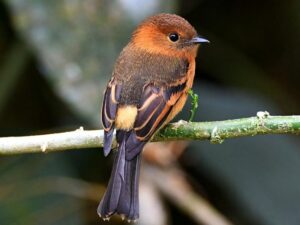
SLATE THROATED REDSTART
Myioborus miniatus
It is a very active and attractive highland tealight. Above all, it prefers evergreen pine-oak forests and borders. Most of the time, it walks in pairs foraging mostly at low to medium levels, sometimes even on the ground. Also, forage with mixed flocks. Consequently, they keep the tail fanned by waving it from side to side. Also, both sexes have gray heads and upperparts with a dull crimson tuft as a crest. Also, we find this species in Mexico, Central America and Costa Rica.
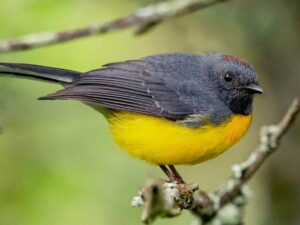
SPECTACLED REDSTART
Myioborus melanocephalus
Frequently integrates mixed flocks. It is found from the extreme south of Colombia and south to Bolivia. Mostly cloud forests. It has pale gray upperparts. As well as yellow underparts and yellow lens-like feathers around the eye with an orange crest. In addition, it tends to actively feed along the branches, spreading its tail.
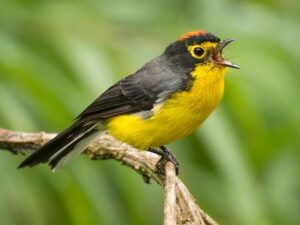
STARRED WOOD QUAIL
Odontophorus stellatus
Almost always, it moves at ground level in groups, pairs or alone. Its diameter ranges from 24 to 26.5 cm. While the male’s crown is reddish, the female’s is brown. Consequently, we will hear it at the Puerta del Sol and Machupicchu and they usually cross the paved road without fear of travelers.
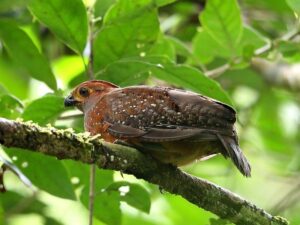
INCA WREN
Pheugopedius eisenmanni
Above all, it lives in the bamboo areas (Chusquea) that are behind the last Wiñayhuayna checkpoint. Also, throughout the descent of the Intipunku (door of the sun) in the direction of Machupicchu. On the other hand, if we follow his song we will have a better chance of observing him. Almost always, this is a duo since it travels mostly in pairs. However, he is reddish-brown in color, with a black and white striped face with a white eyebrow. Similarly, its diameter ranges from 14.5 to 15.5 cm.
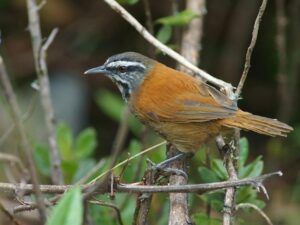
ANDEAN GUAN
Penelope montagnii
Widely distributed in humid mountainous forests ranging from 1700 to 3450 m. However, they walk in groups or alone. Dull brown in color with a small ridge. Also, at first glance it resembles in shape a hen with a slender silhouette. In addition, it is fruitful; It is located in the surroundings of the citadel of Machupichu. Consequently, he is observed on the descent section of the Puerta del Sol. Above all, walking in the sloping branches of medium to large trees where it looks for its food. It is almost always very social if one approaches cautiously otherwise they tend to fly away.
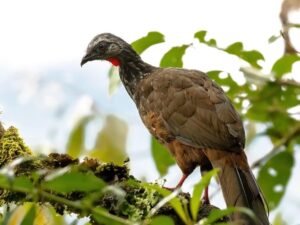
EMERALD TOUCANET
Aulacorhynchus atrogularis
The Emerald Toucanet is all green with chestnut undertail coverts and chestnut tail tip. The lower mandible is always black. The amount of yellow in the upper mandible is variable and color of throat varies according to the sub-species. It can be blue, dusky, or pale. It is similar to Chestnut-tipped Toucanet but is distinguished by having chestnut undertail coverts and yellow in upper mandible. Also similar to Blue-banded Toucanet, but it is distinguished by having a blue or black throat, no red uppertail coverts, and black and yellow bill.
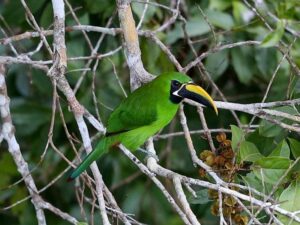
SPOTED TANAGER
Tangara punctata zamorae
Spotted Tanager is mostly green above and whitish below with dense dusky specks on the upperparts and underparts. It forages in the canopy of montane forests. It is similar to the Yellow-bellied Tanager but is distinguished by having speckled underparts without yellow on the belly.
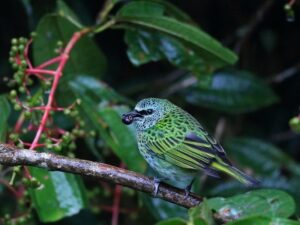
ANDEAN MOTMOT
Momotus aequatorialis
The Andean Motmot has green upperparts that shade into blue towards the wings. The underparts are greenish tawny. The crown is bright blue with a black center. It has a black mask fringed with blue and a long tail with a bare-shafted racket tip. Andean Motmot is larger, overall greener, and range at higher elevations than closely related Amazonian Motmot.
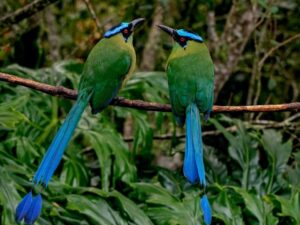
ANDEAN COCK OF THE ROCK
Rupicola peruvianus
Male has elegant crimson plumage with black and white wing feathers. It is also easy to recognize as it moves through the treetops. On the other hand, the female has a small crest and is brown in color that helps protect her from predators. In addition, it is hidden under the shelter of the achupallas (reddish tree plants).
It is a very rare bird to observe. Since, it is found in cloud forests located at a lower altitude. However, if there is an opportunity to observe it, it will be at the beginning of the walk in the rocky area of the Urubamba river. Because it was previously reported.
It should be noted that normally this bird moves in the canopy and canopy area of the cloud forest.
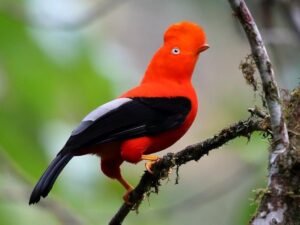
SCARLET BELLIED MOUNTAIN TANAGER
Anisognatus igniventris
Very striking at first glance for its scarlet red and black colors, it measures 18.5 cm in length. Meanwhile, the juveniles have the same color as the adults. However, this one is more opaque. Consequently, it is observed in the descent of the second and third mountain passes that are covered on the second day, they alight quite frequently among the upper part of the bushes.
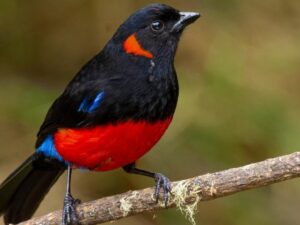
GOLDEN COLLARED TANAGER
Iridosornis jelskii
One of the most striking tanagers for the Inca trail. Due to its golden necklace located towards the back of the head that makes it very attractive. Also, both genera have the same plumage color. Above all, its habitat is dwarf forests, humid scrub between 2,900 – 3,700 m and can descend to 2,500 m. Consequently, it moves with mixed flocks (a combined group of birds that move through the cloud forest hunting for insects). Also, there is the entire descent of the third mountain pass “Phuyupatamarca” along the entire length. Above all, it moves in the middle and upper part of trees and bushes.
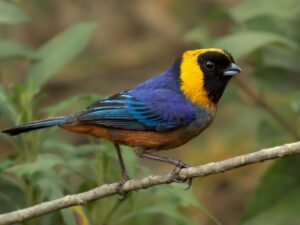
TROPICAL KINGBIRD
Tyrannus melancholicus
Consequently, it is found in the upper part of the bushes near the banks of the river. However, it can be seen accompanying the mixed flocks that we can hear all the way to the Puerta del Sol. Since it measures 22 cm, it is a medium-sized bird. In addition, it has a gray crest and chin with an inconspicuous black stripe at eye level. Next, the chest and abdomen are pale yellow.
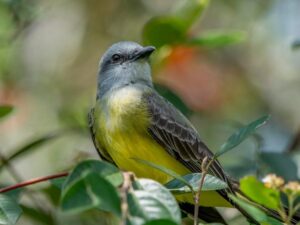
MASKED TROGON
Trogon personatus
It is located in high montane forests (1100 to 3300 m). Almost always we can find it perched on the branches of medium and large trees in the wooded area of the Wiñaywayna camp. In addition, it should be noted that it is one of the most beautiful birds on this route, it measures between 25 and 26 cm. Likewise, it presents chromatic dimorphism. The male is bright black, green and red in color. Meanwhile, the female has a black mask around the eye, a red abdomen and the rest is brown.
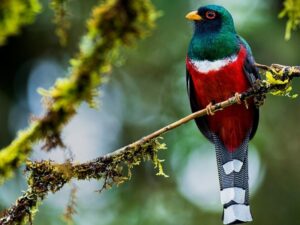
DUSKY GREEN OROPENDOLA
Psarocolius atrovirens
The male measures between 41 to 43 cm. Meanwhile, the female is smaller in size 33 cm. Also, both genera have the same plumage color. It is located in humid montamos forests that are located between 800 to 2600 m. During the first three hours of Inca Trail 104 we can easily locate it. Because their nests are built like gray pendulums that are very striking. In addition, they present a lot of activity. Since, parents are observed entering and leaving them frequently. His song is loud and very loud.
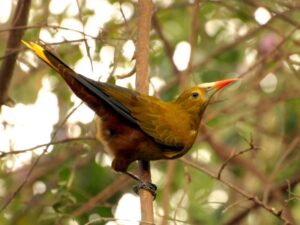
BLUE GRAY TANAGER
Thraupis episcopus
Despite the fact that they are normally distributed at 2000 m it can be found on the Inca trail. On the other hand, the juvenile has almost the same colors as the adult. However, it is of a duller shade and without a white marking on the brim. Meanwhile, it moves in the cloud forest, we will place it in the lower layer of the canopy. Also, we can observe it perched on cables and trees found in the town of Aguas Calientes.
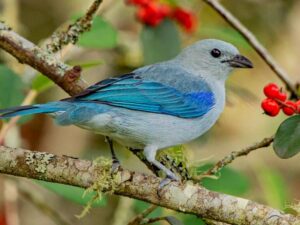
QUICK ITINERARY:
Day 01: Cusco – Ollantaytambo – Km 104 – Aguas Calientes
Day 02: Aguas Calientes – Machu Picchu – Cusco
Highlights of the 2-Day Inca Trail:
The Short 2-day Inca Trail consists on a hike for the entirity of day 1, and day 2 is the guided tour to the Machu Picchu citadel.
Pick up is very early in the morning at your hotel for a private transportation ride until the Ollantaytambo train station, traveling along beautiful sights on a very comfortable ride. In Ollantaytambo you will board a train until km 104 of the old Cusco city-Machu Picchu railroad. The hike begins right there on km 104.
From km 104 the hike goes until the archaeological Inca site of Chachabamba, passing through the wonderful Andean mountainside and along the Urubamba river, a priceless, majestic landscape. The Inca site of Chachabamba displays the amazing Inca building style, and is a quite interesting place to visit, with a complete explanation by our professional guide.
From Chachabamba the inca trail turns uphill, and after 2 hours approximately, you will reach the impressive Inca site of Winaywayna, a very skilled construction adapted on a slope, with many of the typical Inca terraces on the mountainside which were used for cultivation and also administrative buildings where Inca workers could control the production of crops. This site is located at an adventurous 2.650 meters above sea level.
After leaving Winaywayna, we’re back on the trail again, along unforgettable landscapes and the beautiful Urubamba river flowing at the bottom of the valley. This section of the trail actually begins to enter the Peruvian western jungle, and you will arrive at the famous Inti Punku (Sun Gate), which is the entrance to the city of Machu Picchu; from there you can have a striking panoramic view of the citadel from a distance, and afterward a downhill hike begins until the surroundings of the Machu Picchu site, for a closer look. And then, after you have thoroughly enjoyed the view from this nearby spot, you will take the bus from the citadel to the nearby village of Aguas Calientes.
The 2 day inca trail hike is a very enjoyable and light one, indeed it can be done by people aged from 8 to 65 years. There’s no need to set camping nights the final destination is in Aguas Calientes with the possibility of staying at a very comfortable hotel.
This option is also the best for people who want to have a good taste of the Classic 4-day Inca Trail, but don’t have much time available for travelling or are not well-prepared for longer hikes.
You will have plenty of time to take pictures of the Machu Picchu citadel first from the Sun Gate and then closer outside the site; besides, since the arrival is in the afternoon, you will find fewer people and thus it will be a calmer and less crowded place.
This 2 day inca trail hike also offers the great advantage of its everyday availability, since it is not as demanding as the Classic 4-day Inca Trail. We offer it on a very accessible daily basis.
So, if you don’t have much time available for your vacation and are a little bit intimidated by long hikes and altitude mountain camping, but still want to experience a touristic adventure, the 2 day inca trail hike to machu picchu surely is your best choice!
TOUR OVERVIEW
Sustainable Tourism: At Andean Great Treks, we are happy to promote and practice sustainable tourism by being eco-friendly and supporting local communities
2 Day Inca Trail Operator: Andean Great Treks
Service Level: Comfortable, tourist-class accommodation, tourist-class train, and private transport.
Trek’s Difficulty: 2 – moderate; a low-altitude hike, accessible to healthy travelers.
Age Requirement: 4+. Please note: all participants under the age of 18 must be accompanied by an adult.
Inca Trail Permits: It is included in your hike. Please note: the trail is fully booked months in advance during the high season.
Crew: A professional Tour Guide.
Meals: 1x breakfast, 1x lunch, 1x dinner, 1x bag of snacks.
Transportation: Private van, 2x train (Inka Rail train service).
Accommodation: Hotel, 1 night. During the 2-day Inca Trail tour, you will spend a night in a comfortable hotel with a private bathroom.
Departure Point: We pick you up from your hotel (please check the Starting Point & Pick-Up section under the Essential Info bookmark).
Return Point: Cusco – our driver will drop-off at your hotel/hostel/Airbnb apartment.
2 Day Inca Trail Permits 2022
You might check the 2 day Inca Trail Permits Real-Time Availability for 2022 by yourself. It is very important that you complete all details correctly to obtain your Inca Trail permits and Machu Picchu tickets! Once arrived at the trailhead, you need to present your original passport and Inca Trail permits. In case, any details are incorrect, you must book and buy a new ticket to the trail!
Short Inca Trail Camping
If you would like to experience more adventure, you can book the 2 Day Inca Trail Hike with Camping, and spend the night observing stars at the campsite “Puente Ruinas”.
First of all, you start from your hotel in Cusco in our transport. Then we go to the town of Ollantaytambo in the Sacred Valley. Later, we take the train that will take us through impressive Andean landscapes. After just over an hour we will arrive at the starting point, kilometer 104. Our adventure will begin on the banks of the Urubamba River and after a slow ascent we will arrive at the Original 4 day Inca Trail. That begins in the Wiñay Huayna area, before continuing to the “Puerta del Sol” (Inti Punku) and later to Machu Picchu.
Similarly, along our journey through Cloud Forest, we will cross its lush and green landscapes of cloud forests. That completely cover the mountains, where we will appreciate an immense variety of plants, flowers and birds. We will also be able to appreciate some mammals such as the Vizcachas (rabbit similar to the chinchilla) and the spectacled bear (if we are lucky).
Continuing the walk, we will reach the Puerta del Sol (Inti Punku), where in the evening we will get our first views of Machu Picchu. Then, we begin the descent along the beautiful stone paved path to the citadel of Machu Picchu. But, only up to the famous “Mirador” at the top of the citadel. From this point, we descend again towards the town of Aguas Calientes to make our check-in at the hotel and for dinner.
This day is the most important, after having woken up very early, we will take the first bus to go up to Machu Picchu. To enter the site while it is opening and start the first visit shift. Here we will have a tour guide of approximately 2 hours “in-situ”. During which we will learn about the Incas and visit the most important areas of the citadel.
After that, if you have the permit and / or entrance tickets, you can ascend to Huayna Picchu or Machu Picchu Mountain. In the afternoon we will take the train that will take us back to Ollantaytambo. From where we will continue in the car for the return to the city of Cusco.
The Lares Trek & Short Inca Trail hike to Machu Picchu 5 Days includes beautiful places. Among them, archaeological remains and natural areas that are located at different heights throughout the entire journey.
CHACHABAMBA 2200 M / 7218FT:
This archaeological site was probably a point of control and access to Machu Picchu. It is mentioned that he fulfilled religious and surveillance functions. It has stone buildings, there are some enclosures with preserved infrastructure. Possibly, its name derives from 2 words in Quechua. “Chacha” which means welts and / or bites, and “Bamba” which means valley or place. Which would mean Valley where mosquitoes bite you.
WIÑAY HUAYNA 2680M / 8792FT:
Magnificent archaeological site that covers the entire slope of the mountain, its name comes from Quechua and means “Eternally Young.” This site was a small town which can be appreciated by the constructions in a central courtyard and is surrounded by platforms that were used for agriculture and possibly also as containment. Simply a magical and historical place.
INTI PUNKU 2730M / 8956FT:
Site that was the gateway to the Citadel of Machu Picchu in Inca times. Its name comes from Quechua and means “Sun Gate”. It is made up of enclosures with windows and a door by which its name is attributed. At this point, you have an incredible view to the citadel of Machu Picchu.
MACHU PICCHU 2400M / 7873FT:
The name of the impressive Inca citadel of Machu Picchu, comes from the Quechua “Old Mountain” and is the end point of the walk for tourists. Surprise anyone with its greatness, architecture and engineering. The architecture and engineering of this place is unique, here you can appreciate the urban area that shows: the religious precincts, enclosures for the Inca and the residential part. The other area is the agricultural area, where an incredible network of platforms can be seen on the slope of the hill and which also serve as retaining walls. There is also an irrigation system and aqueducts throughout the citadel.
AGUAS CALIENTES 2050M / 6561 FT:
Town located on the banks of the Urubamba River, it serves as the main route of entry to the Citadel of Machu Picchu. The train tracks pass through here and you can also find the hot springs of Aguas Calientes. There is also an artisan market. Its climate is hot and humid, because it is located in the jungle.
OLLANTAYTAMBO 2750M / 8950 FT:
Ancient Inca town, very important before and now, for being the main point of passage to get to Aguas Calientes and Machu Picchu. Here is the archaeological site of Ollantaytambo, which features exquisite Inca architecture. Like the temple of the sun, the bath of the ñusta, the enclosures on the Pinkuylluna hill and an impressive terraces. In addition, there is a typical handicraft market and the train station to Aguas Calientes.
The network of Inca trails, known in the Quechua language as ‘qhapac’ (main road or path of the powerful), is an immense connection of Inca trails built for the most part by Emperor Pachacutec in the 15th century.
These roads linked the main cities of the empire with Cusco, the capital of the empire. The Inca himself was led from the ‘sacred city’ to the various points of the empire through the qhapac ñan.
The network of Inca roads covered part of the territories of the current countries of Peru, Bolivia, Ecuador, Colombia, Chile and Argentina. Due to their historical importance, they are currently considered ‘Cultural Heritage of Humanity’ by Unesco. Because of this they are protected and preserved for the future.
What was the importance of the Inca Trails?
The Qhapaq ñan is the word that defines the road system of the Inca civilization. It is the best proof of the development reached by the Incas in civil engineering. It is worth mentioning that this network of roads was built on one of the most rugged territories in the world. He managed to cross the rugged Andes Mountains and the arid deserts of the South American coast.
This network of Inca roads crossed the empire of the Incas by routes drawn from north to south (from end to end) along the coast and through the Andes Mountains. There were small sections for the common population. There were also wide sections dedicated to Inca royalty. The Inca roads of the sierra had sections completely paved while those of the coast were built simply of earth.
The world famous Inca Trail to Machu Picchu is just one part of this complex network of roads. Go up the Urubamba river basin to the Inca city, after winding difficult mountains. At present it is considered the best hiking route in Peru. You can visit it in four days through a perfectly planned tour.
The roads of the Incas were built with the main purpose of keeping a huge territory communicated. This made it possible to mobilize armies very quickly. It also served as a trade route in a civilization prone to redistribution and exchange. Another extremely important purpose was the culturalization of the newly conquered peoples. It should be noted that these roads were built in the expansionist time of the Incas.
What is the length of the Inca trails?
At present, more than 60 thousand kilometers of roads that formed this enormous network have been identified. But studies carried out reveal that the Qhapaq ñan would be made up of more than double that identified throughout the South American territory.
What was its function?
The route of the Inca roads, in addition to connecting one town with another, served to connect the culture of the peoples of the time. Likewise, its function was that of a trade route and strategic routes of cultural connection between the different towns of the immense Inca empire. This is how Inca cities were integrated such as: Vilcashuaman, Pumpu, Hatun Xauxa, Huánuco Pampa, Cajamarca, Quito, etc.
The Qhapaq ñan shows many sections in which there are two parallel roads in a trunk route. It is known that the Inca, his court and his armies would go through one of them, while the other was destined for the people.
Likewise, this road network had a commercial function as it supplied different cities with products that were harvested at different altitudes. For example, the city of Cusco was able to supply itself with: chili, cotton, coca, corn, fish, mullu and even the famous spondylus shell.
How is it designed?
The Inca trails are designed in response to the coastal and mountain geography. There are stretches in immense arid plains up to the most rugged mountains of the Andes mountain range. There are also countless slopes, cliffs, mountains, pampas, swamps, gorges, and canyons. In many cases, the most difficult sections were solved with bridges and uneven roads.
Main Inca trails
The Inca roads were made up of several longitudinal and transversal sections. However, the longest and most important sections were two: the longitudinal route that crossed the Andes Mountains and the longitudinal route that crossed the desert coast:
The coastal roads: As its name indicates, this longitudinal route ran along the coastline of the empire, from the south of Ecuador to the north of Chile. The roads reached 3,943 kilometers. It is calculated that the minimum width measured 3.5 meters while the maximum width reached 20 meters. It crossed up to 52 Cusco valleys including important religious centers such as Tambo Inga, Armatambo and Pachacamac. The Inca Huayna Cápac had these roads built after conquering Quito (Ecuador) in the 15th century.
The roads of the mountains: This road was initially built by Emperor Pachacutec and finished by his successors Túpac Inca Yupanqui and Huayna Cápac. This route connects the current cities of Quito (Ecuador) with Santiago (Chile), crossing the difficult geography of the Andes Mountains. In total it has an area of 5,658 kilometers. Due to the mountainous slopes, this road was built with stone pavers, bridges, as well as administrative centers, tambos (rest centers for walkers) and colcas (food centers for walkers). The narrowest sections were 3 meters wide. The widest sections, eighteen meters.
Constructions along the roads
The difficult South American geography and the immense distances that the Inca roads traveled forced the Incas to build certain structures necessary for the proper functioning of the roads.
The bridges: There were several bridges that allowed crossing rivers or spaces with abysses. These bridges could be woven of straw (the icchu or wild straw of the Andes) and were characterized by being hanging. And there were other bridges that were built of tree trunks, supported by abutments of huge stone blocks. Also noteworthy are the ‘oroyas’, wooden rafts that were used to flow through the lakes. Currently the Queswachaka bridge in Cusco is an example of the tradition of the Andean peoples in the construction and maintenance of Inca bridges.
The tambos: These constructions had the function of shelters and deposits of food, wool, firewood, clothes. These products were stored both for people who traveled and for emergencies. It is estimated that on the main roads there were dairy farms every 20 or 30 kilometers. These housed the “chasquis” or emissaries who were young runners who went from tambo to tambo carrying the Inca’s messages through a relay system. Through this system it is said that a message could reach from Cusco to Ecuador in 10 days (approximately 2,000 kilometers).
The Inca Trails to Machu Picchu
The Inca Trail to Machu Picchu is the small network of roads that connects the towns of Cusco with the Inca city of Machu Picchu. With the discovery of this archaeological site in 1911, part of this section of the Qhapac ñan was unearthed. Since then these trails have been valued.
Due to its location on the slopes of mountain ranges, this section of the Inca Trail was built following the characteristics of the mountain roads. The Incas first made the layout of the road, then the foundation of the soil with several layers of stone and earth. Next the paving and the drainage system were made. Due to their complex construction, these trails are kept in good condition.
This section of the Inca Trail was not discovered by the Spanish. It is also believed that they did not give it the necessary importance. In any case, the Spanish did not reach Machu Picchu, which, after being abandoned, was hidden in the thick vegetation over the years. The section from qhapac ñan to the Inca city also suffered the same fate.
The Inca Trail today
Currently, the section of qhapac ñan that connects Cusco with Machu Picchu was valued and adapted to be traveled by tourists. It is a route of almost 40 kilometers that is crossed in 3 days and 3 nights. The fourth day is dedicated to visiting Machu Picchu.
Unlike other hiking trails in Cusco, the Inca Trail to Machu Picchu is protected by the Peruvian State. This is due to the historical value of the sections of qhapac ñan that it runs through. Therefore, no unauthorized person can walk its ways.
The only way to get this authorization and travel the Inca Trail is to hire a tour through an authorized tourism agency. Tourism agencies manage permits with the Ministry of Culture of Peru and add a tour guide service, camping equipment, food, tickets to Machu Picchu and more services for the visitor.
Currently there are many tourists who want to make the Inca Trail to Machu Picchu. Due to the high demand of visitors, tours must be purchased online 6 or 7 months in advance. It is the best hiking trail in Peru.
For anyone who wants to reserve their space in advance, the most prudent thing is to do it with a minimum of 4 – 5 months in advance. These permits are usually sold quickly in a matter of seconds and minutes, of course, which depends on which month you choose.
The best sellers are May, June, July, then comes April, March, August, then September and October. February is the exception, it is NOT operational for reasons of maintenance of the Inca trail network.
Usually, the capacity of spaces available on the 2 day Inca trail hike to Machu Picchu per day is 200. Among this number of limited capacity, tourists and guides are considered.
Before making your reservation with any authorized travel agency, you should always ask for the availability of spaces on the date you want to make it. Since it gets sold out quickly due to high demand.
You can book in any of the months that go from March to January. But, the entire month of February remains closed due to the maintenance that is given to the entire Inca Trail Network. This organized by the competent authorities.
To explore the fantastic Short Inca Trail Hike to Machu Picchu, it is required to carry the main identification documents. That can be corroborated with those reflected in the permits purchased in your name. That is why you should always provide accurate information to the organizers of your trip. Because at the time of data corroboration there should be no errors:
Any of these that you have used for your registration in the purchase of your tickets, you must bring them yes or yes. Otherwise, you will not be able to access the walk, so you must keep it very well before and during the walk.
Note: In case of having renewed the passport days prior to the trip, it must be updated in advance of the first day of the trek. For this you must send a copy of your old and new passport to the corresponding agency that will make the arrangements.
There is a slight discount that the Ministry of Culture offers to those who carry a student card or for minors. In case of applying to the student discount, you must present a copy of the card with the following characteristics:
Note: The student must not be more than 25 years old to apply for the discount.
We try to make booking as easy as possible at Andean Great Treks We need a booking form that is completed and includes all details for the entire party on one form, and then a $200 deposit per person. The deposits can be paid separately, as long as we have one booking form that we can use to track payments. Once we have all deposits and details, we will then book your permits. When permits are in our hands, we will send you your invoice and confirmation that everything is 100% set. All start dates, once confirmed, are guaranteed.
Only licensed Inca Trail tour operators, like Andean Great Treks, can secure permits from the government. Once we have secured your permit, the name and start date can not be changed under any circumstance. The only information that the government allows us to change is passport numbers.
If you like to go ahead and book the Short Inca Trail Hike to Machu Picchu 5 Days, you will need to send us your passport details such as full name, passport number, nationality, and date of birth in order to be able to process it. Once you arrive at the trailhead, the archaeological park rangers check your Inca Trail permit along with your original passport and compare your personal details.
Important notice: if you fail to send correct details, you will be denied entrance to the 2 day Inca Trail hike!!!
If you still like to get on the 2 day Inca Trail hike and Machu Picchu, you would need to pay a new permit (US$ 100.00). So, we would like to kindly ask you to be very careful when sending us your personal information.
Can you use your old passport to book the permit and then exchange it with your new passport?
Yes, it is possible, BUT it is very important to bring a copy of your old passport with you too! When on the Inca Trail, you can present your current passport along with a copy of your old passport.
The government will only allow us to change passport numbers if we have a copy of the new passport and old passport. If you no longer have your old passport, any government issue ID will be accepted, as long as the name is the same.
FIRST, to book our day tours and Machu Picchu Tours, we need you to fill out our booking form with your personal information by clicking on BOOK NOW.
Please be ready with the next information (FROM EACH PARTICIPANT in your group). We cannot purchase an entrance to Machu Picchu or the train without the following information:
Personal information (your full name, exactly as on your passport):
SECOND, we require a deposit of US $ 200.00 per person in order to purchase your entrance to Machu Picchu and train ticket.
It could be greatly appreciated if our clients pay in cash at your briefing time in our travel office (US dollars or Peruvian soles) here in Cusco. We have many cash machines in the historical center to withdraw money.
At the time of your information session, the guide will provide you with all the information about what to bring in your travel backpack. Therefore, we recommend that you pack only the essentials.
This trek does NOT include porters. You will be carrying all your own things yourself while hiking. Because of this, it is imperative to pack as light as possible. A light backpack is key to feeling great.
It is good to bring all the cleaning supplies that we will need. Here we mention some:
It is important to take into account the weight of the luggage that will be carried on the walk, because in case it exceeds this amount. You yourself will have to deal with the weight you carry during the first day of the Inca trail. Above all, keep in mind that the train accepts luggage no more than 6 to 8 kilos. That is why you should take only what is necessary.
It is not necessary to carry all the luggage that you brought with you for your trip to Peru on the 2 day inca trail hike. Only, you should pack only what is necessary for the 2 days of walking. The changes of clothes for each day must be well organized. Also, complementary clothing. For example, extra slipper, jacket, cap, hat, among others. The luggage will be able to fit in the backpack or duffel bag that has an exact measurement.
Of course! During the Short Inca Trail Hike to Machu Picchu your main luggage can be store at our office or at your hotel, both are for free. Please don´t pack anything you will need for your hike.
The airport in Cusco is currently only for domestic flights. All international travelers by plane must disembark in Lima and go through Customs. Even if your flight to Cusco is the same day by the same airline carrier. You still must grab your bags in Lima and then check them back in.
The best way to get to Cusco is by flying and there are several airlines to choose from. LAN tends to be the most expensive but has the most options and flights. Expect delays or flight cancellations. Due to the high altitude of Cusco it tends to be difficult to land. Bus travel is always available, while the trip can be long the buses in Peru are very well maintained and comfortable. This option is strongly encouraged if coming from a city closer to Cusco. Lima buses will take about 20 hours to arrive.
Every Andean Great Treks guide has received first aid training from a physician. We also conduct mandatory training every February that every Andean Great Treks guide is required to attend. Each of your guides will have a first aid kit for basic medical problems on the trail.
In case something happens on the Lares Trek & Short Inca Trail to Machu Picchu 5 Days and you feel you can no longer continue they also know the safest and quickest way off the trail. You’ll always have someone with you. A member of the team will escort you every step of the way. When you’re feeling up to it, we can even make sure you have the chance to visit Machu Picchu. You’ll be able to re-connect with your group, traveling by train comfortably.
As in all trips, it is not mandatory to obtain travel insurance, but it is highly recommended to purchase any of these. Since, you never know what might happen during your trip. Maybe a delayed flight does not allow you to arrive on time for your walk, maybe strikes, some natural disaster or it gets bad during the walk.
You should know that medical expenses in Peru are more expensive than in other countries. That is why it is convenient to obtain some insurance that covers these types of situations. Insurers generally have an approximate cost of $ 100 to $ 150 depending on the type of insurance you choose. Here are some insurance companies:
The best season to walk is during the dry season. However, whether you do it in either season, they will have their advantages and disadvantages.
If you do it between the months of November and January, the presence of visitors is less than in the other months. And as is known, the rainy season begins in November.
If you do it between the months of May to August, you will notice the high demand of visitors, so there is more crowding. But the climate is pleasant and with a slight presence of drizzles.
Recommendations: It is very important to carry the correct luggage for any of the seasons in which you decide to travel. Whether you go in the rainy season or the dry season. You should always be warned of rain, wearing waterproof jackets or rain ponchos and sunscreen.
During the Short Inca Trail Hike to Machu Picchu, you will not always find internet availability. Therefore, the use of cell phones or other electronic devices is not convenient in some parts. But, to maintain communication on the part of the personnel with the clients or with the administrators of the contracted agency. Radios or satellite phones are used.
The first day you will find the internet in some parts. As long as you have a mobile line from the CLARO or BITEL operators.
The second day you will find a telephone and internet signal.
We offer a box lunch service for the first day of the tour. In case you have any dietary restrictions, it is important that you inform your sales agent or the guide during the information session. In order for them to communicate this in advance to the cook, he must consider other types of food for you.
The dinner that you have included in your travel package will be in a tourist restaurant in the town of Aguas Calientes, with a choice of à la carte dishes, it is also included a buffet breakfast at your hotel for day 2 for the morning.
For any additional expenes that you may have over the Short Inca Trail Hike to Machu Picchu. Whether in the purchase of water, cookies, candy, toilet paper, etc. You must have cash in Peruvian soles, remember that the residents do not accept any other type of currency.
The average amount per person is S / 150 – S / 200, but the question may arise: Why do I have to pay for extras if I pay for the full service? For that you must be careful when reading the inclusions and non-inclusions of the contracted tour.
Trekking poles are necessary during the Short Inca Trail Hike to Machu Picchu as they provide enough support to continue walking. Be it in the steep, rocky places or on the descents.
These instruments will help us with the weight of some parts of our body if we use them properly. Therefore, in case you do not know how to use them well, you can consult your guide to explain the correct use in each different terrain that you encounter.
While you can stay at any hotel in Cusco, the city is becoming more challenging to navigate by car. Many roads, especially near the main square, are open to pedestrian traffic only. We will notify you if it is not possible to pick you up by car and arrange another meeting point for pick up / drop off. For a list of recommended hotels, please ask your Andean Great Treks sales rep.
Ollantaytambo is the best place to stay other than Cusco. By staying in Ollantaytambo, you get a little more sleep, because we will pick you up about 1.5 hours after the Cusco pick up time (at 6:10 am). You can only have your briefing in Cusco. So please arrange a time that works for you and our office team with your Andean Great Treks sales rep.
Of course, if you are ok with taking the same train out of Aguas Calientes that is part of your original itinerary, which is typically at 14:00 pm, that evening than there is no additional charge to move the train back a day. If you need us to secure your hotel or another visit to Machu Picchu, this will be an additional cost. If you do choose to spend one more night in Aguas Calientes, make sure you tell the Andean Great Treks office at least one month in advance, so your train ticket is purchased for the right day.
You can choose any hotel to stay in Aguas Calientes. It’s a small town, and you absolutely can book on your own. It will reduce the price of your trek $40 per person. If you choose to book your hotel, make sure you tell us where you plan on staying so we can get you there safely.
Andean Great Treks is a very responsible and ethical tour operator in the organization of trekking circuits to Machu Picchu. We pay an adequate salary according to the norms of the unions and the Ministry of Labor of Peru to all our personnel, our guides feel very happy with the job with this great work team.
Therefore, if you felt very comfortable and you liked the work of each of our guides on the Lares Trek & Short Inca Trail to Machu Picchu 5 Days route, it is your wish that you can provide a tip, regardless of the amount. They will welcome this very nice gesture from you.
Andean Great Treks uses biodegradable soap and transports all our garbage back to Cusco. Our porters are trained to look after the trail and pick up any waste. We also use environmentally-friendly portable chemical toilets that allow us to carry waste out. Andean Great Treks believes in leaving no footprint behind.
Andean Great Treks is proud of the work we do for our community, as this is the main focus of our company. We’ve worked with villages directly to help supply them with the needs their families were missing. We have supported local schools by giving them computers and books. Andean Great Treks also sponsors a teacher at the village where most of our porters come from.
We buy all our food from local farmers and markets and serve the freshest ingredients. We provide English classes for all our team: guides, porters, chefs, and drivers. We’re building our porters a safe and comfortable house to stay at before and after our treks.
And twice every year we bring our porters and their families to Machu Picchu. The men and women who work tirelessly have never visited the Lost Citadel of the Incas. So that makes this trip our favorite to-do. It is an honor to show them this place.
Andean Great Treks also develops social projects to help the most outstanding students of each community with a study scholarship at the universities of Cusco-
Our company has a high concern for the well-being and health of children and adolescents in the communities of our porters. For this reason, every semester we take them health campaigns where the doctors check their teeth, and reduce the standards of anemia. We also believe that as a great gesture of social projection we commit ourselves to offer baskets of basic food to the poorest families.
The briefing for the lares trek will take according your arriving date, you can came to our travel office , which is located at Marques Street 250, second floor. Our office schedules are from 9:00 am to 17:00 pm. Monday to Saturday.
FIRST, to book your Lares trek to Machu Picchu, we need you to fill out our booking form by clicking on BOOK NOW on our homepage or click here the link BOOK NOW.
Please be ready with the following information (FROM EACH PARTICIPANT in your group). We cannot purchase the Lares trek to Machu Picchu permit without the following information:
*** We will need each participant’s passport at the time of booking. They will be need, in order, to purchase tickets.
SECOND, we require a deposit of $200 USD per person in order to purchase a permit for the Lares trek Machu Picchu. You can make your deposit by clicking on the VISA or PAYPAL symbols on our booking page.
The weather in the Lares Trek is very unpredictable and it’s difficult to foresee. We recommend to always dress in layers as it is more easier to adjust to the different climates.
The maximum group size is 8 persons. Our groups are between 2-6 persons. Andean Path Trek specializes in SMALL, PRIVATE groups and provide a personalised service.
You will have 1 cook per group. The number of horse man depends of the size of the group. For a group of 2 trekkers, they will have 1 horse man, 4 trekkers will have 2 horseman, 6 trekkers will have 3 horse man, 8 trekkers will have 4 horse man.
The evening before you start your lares trek, you will be given a SMALL DUFFEL BAG to pack your clothes for the next four days. Your weight allowance is up to 7kg/14lbs. The horses will carry your duffel bag for you, together with the food and camping gear. It’s important to be aware, that you will not have access to your items in the duffel bag until the end of each day, as the horses will always be ahead of the group. During the lares trek, you need a day backpack big enough to carry your personal belongings such as a warm jacket, a rain jacket, your camera, sunscreen, snacks, water, etc. A 20 to 30L backpack is sufficient.
The Lares trek to Machu Picchu is a 39 km hike through the Andes in the Cusco region. The maximum altitude reached is 4,700 mt. On the second day of the trek, we climb two mountains. The trail is a fairly difficult trek and you should be well prepared and healthy prior to starting it. You have to be moderately fit and take regular exercise. In preparation: try walking 15kms/9 miles in a day or working out in the months leading up to the lares trek. It is also important to be well acclimatized to the altitude. Try to spend at least 2 or 3 days in Cusco (3350m/11,047ft) prior to starting the lares trek.
It has been highlighted by most of our clients, especially by lady trekkers, who want a private, clean and sanitary toilet!! Andean Great Treks toilet facilities have an individual tent and a “camping toilet with a seat.” Our toilet is always set up a comfortable distance from our campsite. At night if you need to use the toilet it is readily accessible and clean.There are hot showers and hot water pools to soak in and relax on the first day of your trek at the Lares Hot Springs. Be sure to bring your bathing suit.
In the scenario that you are unable to finish the lares trek due to a health issue, Andean Great Treks will assist you to the nearest town for help with transportation. We always carry oxygen on the trek for any respiratory problems In extreme cases, a helicopter pick up can be arranged at your own expense. (Travel insurance required). There are no refunds in the unlikely situation that you are unable to finish the Lares trek.
Generally, those who have to be assisted off the trail are taken to the Lares Village and then to Calca Town, and if they recover quickly, they then continue the journey to Aguas Calientes (cost incurred by trekker) and visit Machu Picchu according to original plan.
Absolutely!! Hotel drop off is included in your lares trek package. If you have booked your hotel in the Sacred Valley like Ollantaytambo or Urubamba, we will drop you there too.
On third day your train departs from the Ollantaytambo train station at 16:36 pm. Arriving to the town of Aguas Calientes at 18:00 pm. For the return from Machu Picchu to Sacred Valley we will secure the train at 14:30 pm, at this time still you have the chance to enjoy more of the beautiful Andean landscapes and the Urubamba river surrounded by typical cloud forest and snow peaks, such us the Veronica mountain.
The Lares Trek is 33 kms ( 20.5miles) long and depending on which campsites are used the approximate hours hiked per day are:
It’s impossible to predict who will be affected by altitude. Your ability to adapt to high altitude is determined by your genetic makeup and has little to do with fitness or health. Most people will have no problems as long as they take the time to acclimatize properly. A full day spent in Cuzco (3249m), taking it easy and drinking plenty of water, is usually enough for most people.
The highest point you will reach while hiking the Lares Trek is 4550 meters. You will sleep at 3600 meters for one or two nights.
No, llamas, pack mules and/or horses will be provided to carry your personal items. You will still need to bring a day backpack to carry any essentials you might want or need, such as water, snacks, camera, sweater, rain jacket, etc.
The high altitude means it can get quite chilly, especially during the Andean winter (May – September) when the temperature can drop to below zero degrees (Celsius) at night. It can still be cool at other times of the year and so we recommend bringing thermal underwear and a warm sleeping bag. You can purchase warm, inexpensive and locally made hand-woven hats and gloves in Cusco.
Sleeping bags are not included and so we recommend bringing a compact three-season sleeping bag. If travelling between May and October a 4-season sleeping bag is recommended. These can be rented in Cusco for approximately $20 for the length of the trek. Some renters may choose to bring a sleeping bag liner or sheet. Foam mats are provided however some travellers also bring their own self-inflating mat (ie. a Thermarest). These may also be rented in Cusco for approximately $20 for the length of the trek.
Our cooks prepare excellent high-energy meals appropriate for a trek of this nature. The menu usually includes pasta, rice, chicken, fresh fruit and vegetables and a variety of oatmeal, eggs and other breakfast foods. Vegetarian alternatives are available upon request at the time of booking.
In brief, the best time to hike Lares trek to Machu Picchu is during the dry season from April – August. Also, the trail isn’t crawling with tourists or large groups of people and so much more in the rainy season from December to March. Whereas in September till November, the days are frequently sunny, but it sometimes just gets cloudy threatening to rain but it either rains or fades, overall it is still a good season.
Take the Lares Trek to get to know about life in the Peruvian Andes mountain, because you will witness a more authentic way of life of the Quechua People living in this part of Cusco; and there you will have a chance to learn about their wisdom, religion as well as their philosophy. Besides only mountain villages and the local culture, enjoy the clear blue lakes, valleys inhabited by Alpacas, the alluring mountain peaks, and many marvels this trek has yet to offer.
The highest point to get to, when hiking the standard Lares trek to Machu Picchu, is the 15 400 ft / 4 700 mountain pass, a mountain pass by the name of Pachakuteq pass. And this mountain hike is completed on the second day of hiking, then on the third day is the entry on the Sacred Valley Ollantaytambo, and subsequently the train ride to Aguas Calientes town.
Want an in-depth insight into this trip? Essential Trip Information provides everything you need to know about this adventure and more.
View Essential Trip InformationThe best time to visit Peru is during the dry season, between May and November, when the weather is dry and bright, with more frequent rainfall occurring between November and April.
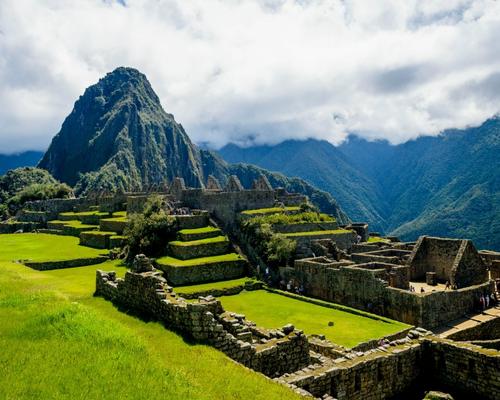 JANUARY
JANUARY
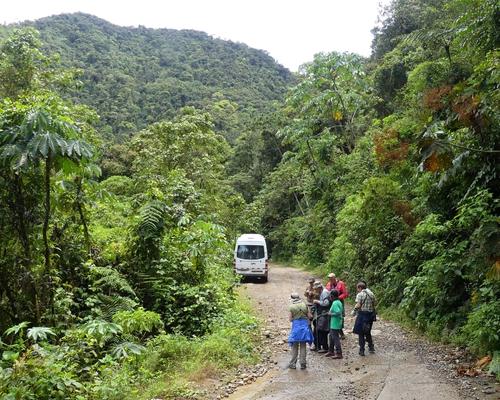 FEBUARY
FEBUARY
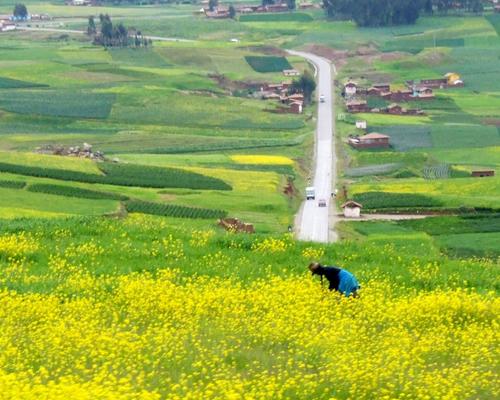 MARCH
MARCH
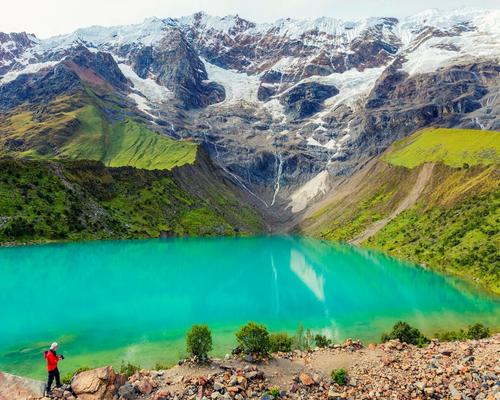 APRIL
APRIL
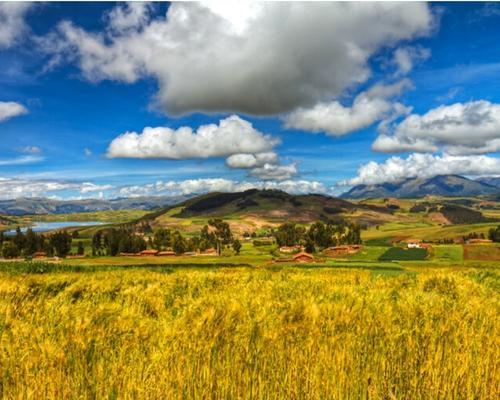 MAY
MAY
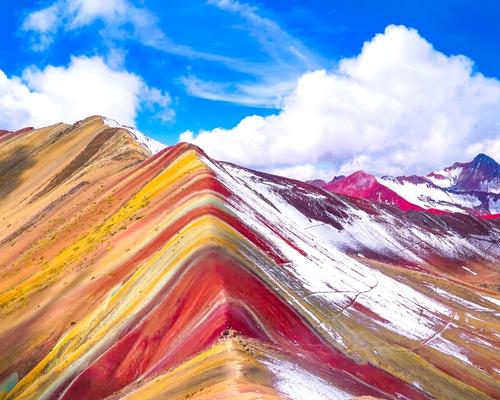 JUNE
JUNE
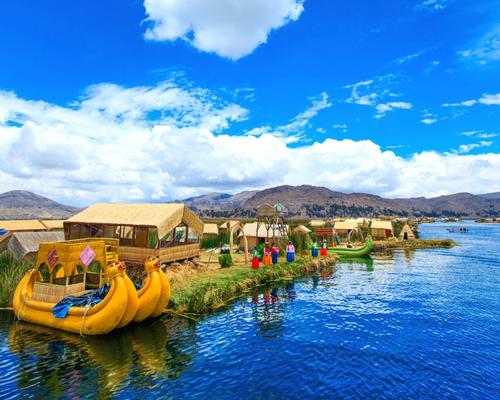 JULY
JULY
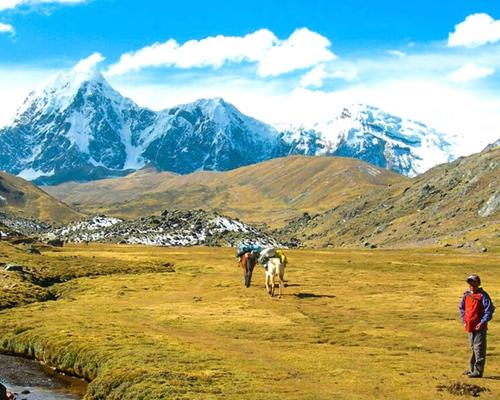 AUGUST
AUGUST
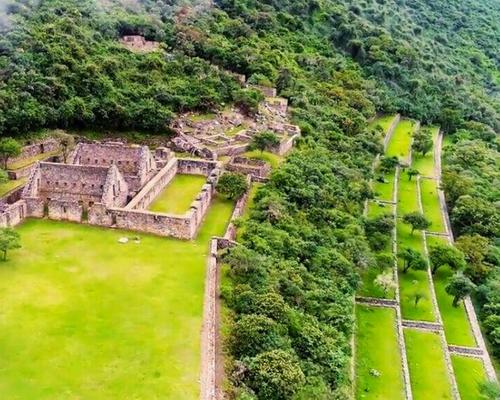 SEPTEMBER
SEPTEMBER
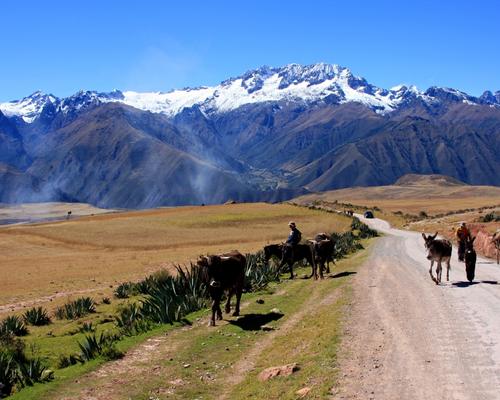 OCTOBER
OCTOBER
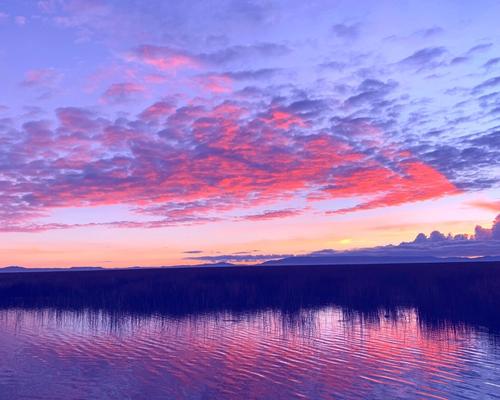 NOVEMBER
NOVEMBER
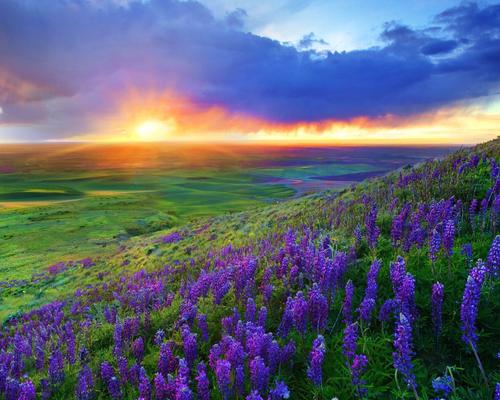 DECEMBER
DECEMBER
To book this tour, a minimum of $ 200 USD per person is required, the remaining balance will be paid upon arrival in Peru, at the Cusco office.
Any other additional information, please coordinate with your travel agent.
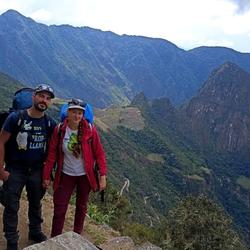
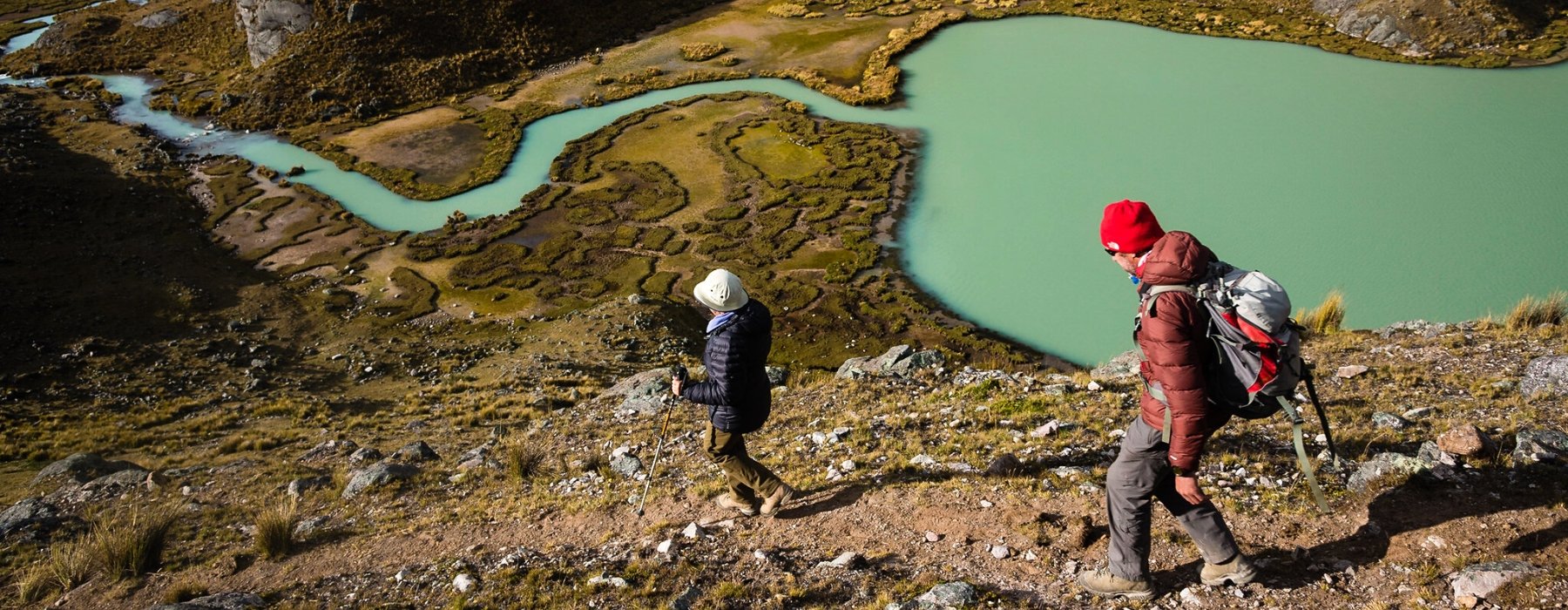
Nothing gets you closer to a country than walking through it, and we’ve got trips to suit walkers of all levels and interests.
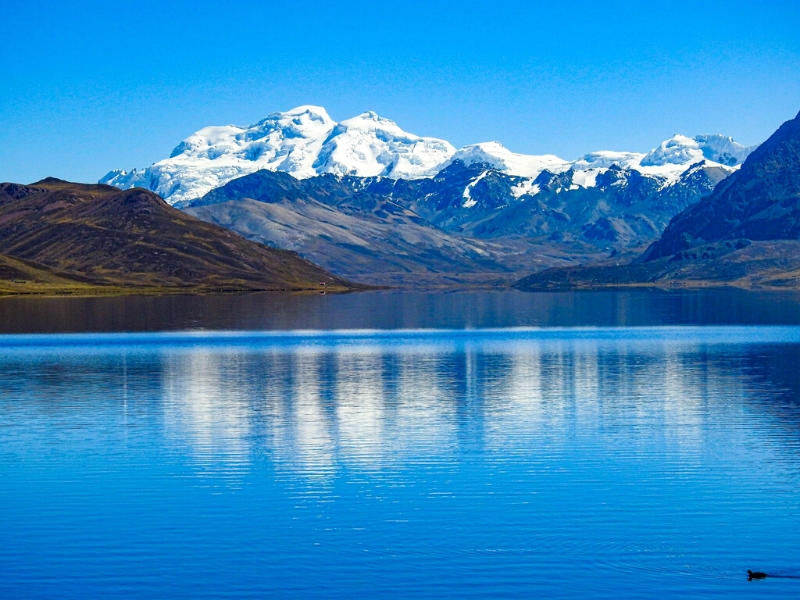
All our Walking trips are graded from ‘Easy’ through to ‘Challenging to Tough’. On our online trip itineraries you’ll find a chart showing the daily walk distances, timings and information on the route including the terrain, altitude. Generally, no specific training is needed but you might feel more comfortable if you’ve got out walking a few times in the lead-up to your trip.
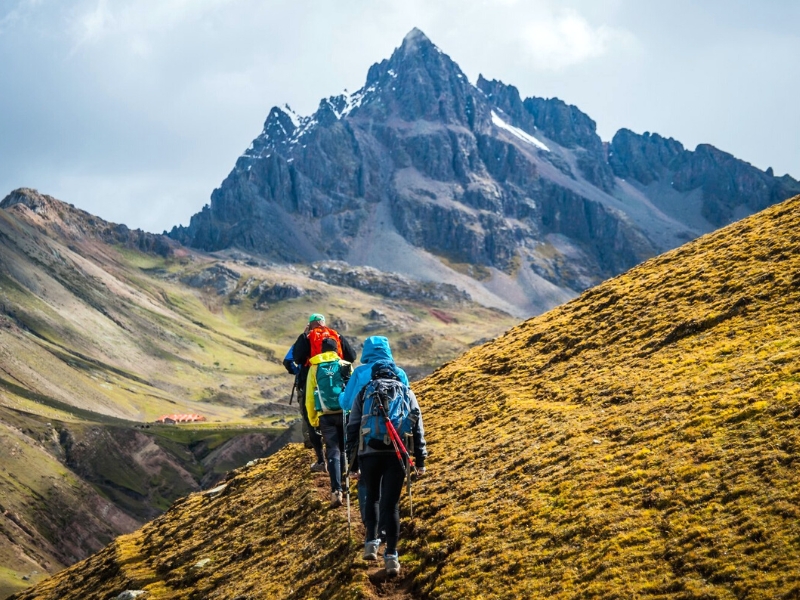
As with all our trips, every group is different but the ‘average’ group consists of roughly half couples and half solo travellers – all sharing a passion for exploring the world on foot. You’ll always have someone to keep you company along the route, but you don’t always have to walk together. Wherever possible your Andean Great Treks leader will allow everyone to walk at their own pace, regrouping regularly along the route.
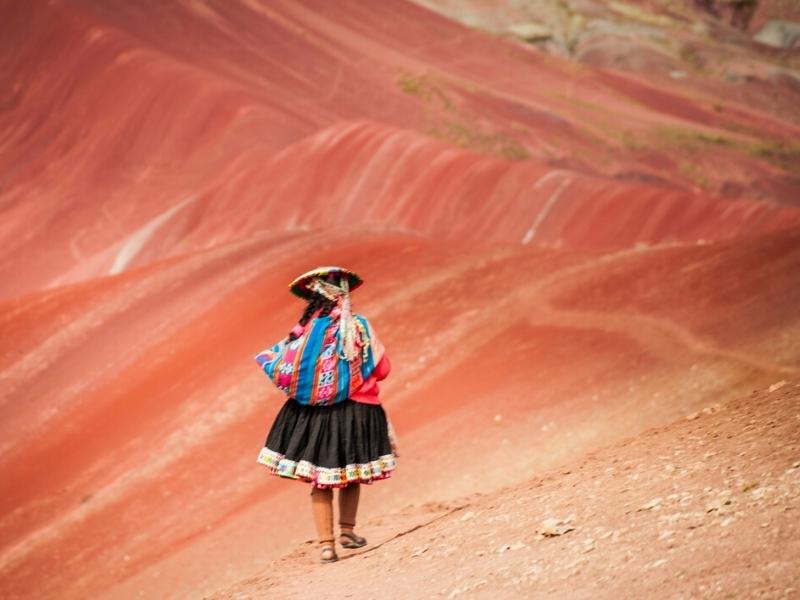
Mostly of our hikes in the mountains in Peru and Cusco like the classic Inca Trail to Machu Picchu, Ausangate Trek, Lares Trek, Ancascocha Trek, Salkantay Trek , involves an average of walking hours of 7-8 hours per day, this timing includes stops for taking photos, lunch, breaks for recovery the energy, and the most important we adapt to your walking pace. This relaxed style of trip involves to know all the attractions in greater depth.
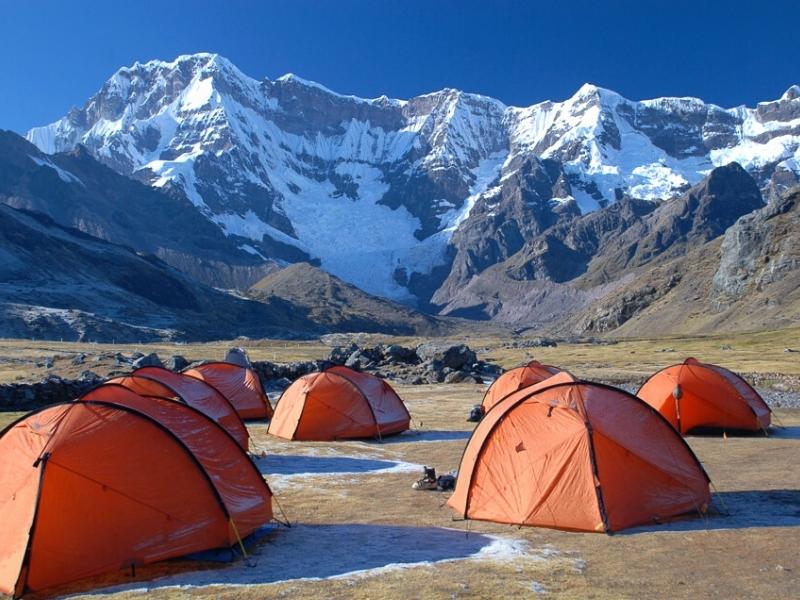
On nearly all our Walking trips, porters or mules will carry all the camping equimpent, so your main luggage will be transported for you. We recommend walk with a light rucksack, you will carry water, snacks, a camera, a small first aid kit and any extra clothing or sun protection. On more remote or challenging treks, additional guides are there to assist the leader tour guide and provide support to the group.
The acclimatization period is very important for our travelers to enjoy the experience. We suggest a minimum of 3 or 4 days of the previous stay in Cusco city, the Sacred Valley of the Incas or Machu Picchu. We recommend you check the acclimation programs we have prepared for you on our website.
The average height of our camps in the trekking circuits is 3,500 masl. In fact, one of the circuits where you sleep at the highest altitude is the Ausangate Trek, where you will have days to set up the tents at a height of 4,300 meters. Remember that Peru has snowy peaks that reach up to 6,700 masl.
From 3,000 meters above sea level, the symptoms of “altitude sickness” vary according to each person, and may even not occur. However, among the most common are a headache, dizziness, nausea, loss of appetite and insomnia. Therefore, upon arriving in the city of Cusco, located at 3,400 meters above sea level, we recommend our travelers to take a good rest, drink plenty of water, eat light meals and take slower walking. Also, it is necessary to avoid alcoholic beverages and cigarettes. The symptoms can be alleviated with high mountain medicines such as DIAMOX or similar products, but we suggest you consult with your doctor before the trip.
While on the trail, hikers will need to carry a daypack (camera equipment, water bottle, extra layers, rain gear, and other accessories you might need on the trail.) Horses and llamas will carry your duffle bag to the next camping site.
The company makes the greatest efforts to provide a safe and unforgettable experience, for this reason, the trekking guides are constantly communicated with the central office through satellite phones, ensuring the welfare of each passenger. Our guides are trained in rescue techniques and first aid in emergency outdoor, these courses are developed annually and have the standards of the wilderness first respond. At all times we have oxygen and first aid equipment. In case of any eventuality a medical director will answer our questions 24 hours a day. In addition to the animals who carry the luggage we have horses to help walkers tired or eager to ride. We recommend getting a travel insurance.
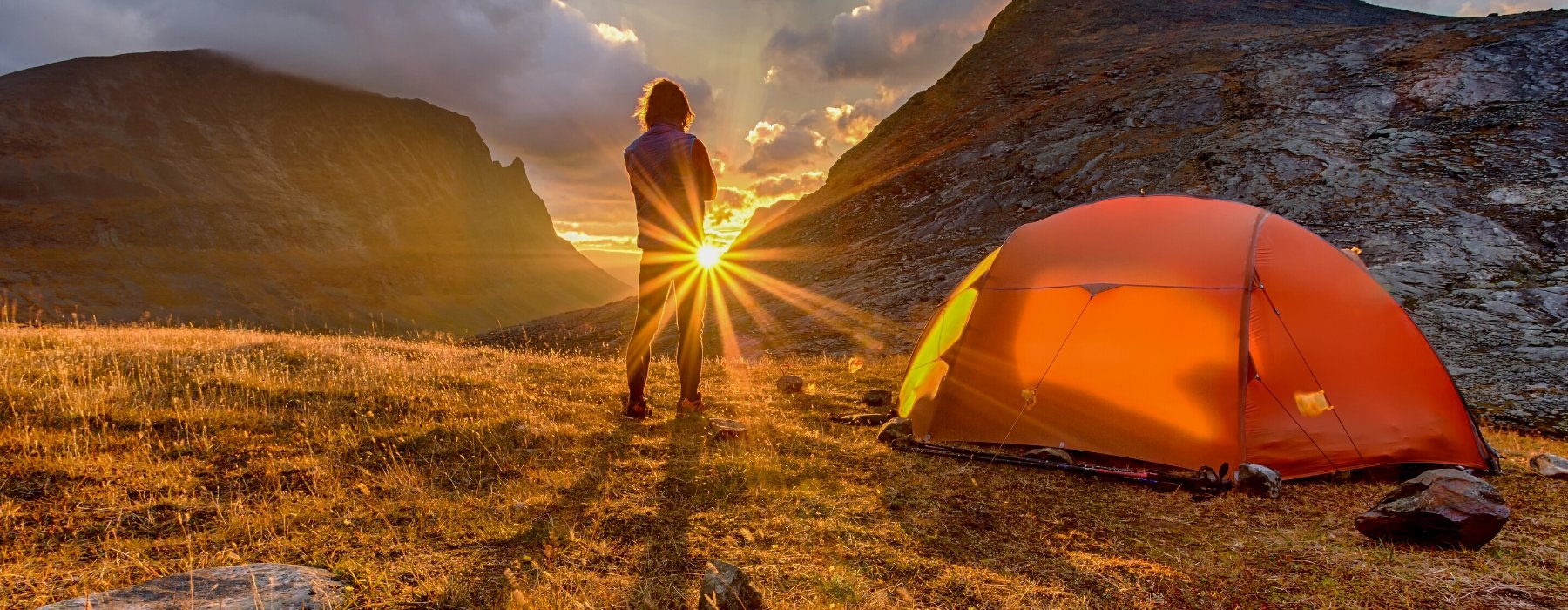
Every Andean Great Treks holiday has been thoughtfully planned and crafted by our specialists. They draw on their own extensive travel experience and the guidance and expertise of our local partners to create superb holidays. Our specialists are committed to making every aspect smooth and enjoyable; they genuinely want to ensure that the holidays they create leave you with wonderful lasting memories.
Every Andean Great Treks traveller is accompanied by an experienced tour guide, you will be immersed in Historic cities, ancient ruins and unfamiliar landscapes are all brought to life by our carefully selected local guides. They want to share their expertise and help you make your own discoveries too; their sole mission is to ensure you enjoy every moment.
Giving you the freedom to make your holiday even more memorable. We know how much our customers look forward to their holiday and we pride ourselves on the choice and flexibility that we offer to enhance every aspect of your experience. Whether it’s getting to the airport, upgrading your room or booking an additional excursion, we can help.
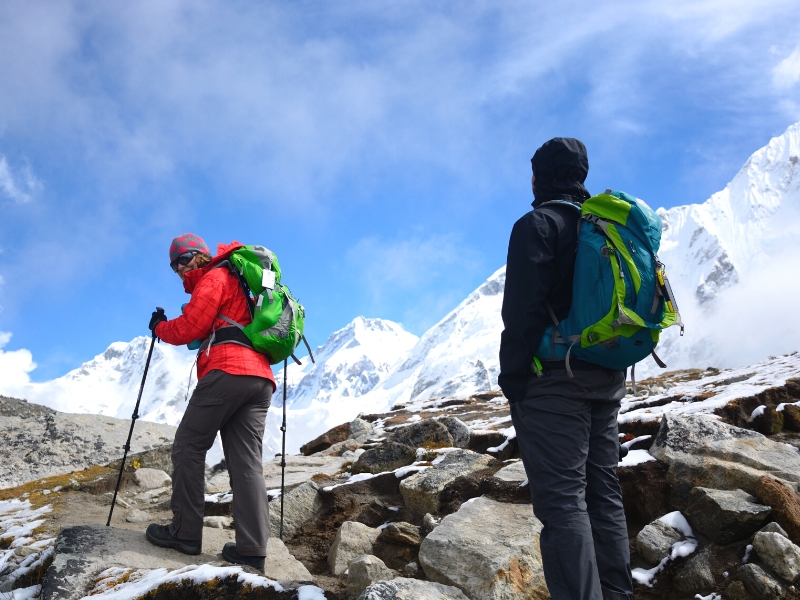
Our guides are the stars of the show; it is their unrivalled knowledge, passion and expertise that will transform your tour experience from good to truly extraordinary!
Because the have grown up in the area and know it like the back of their hand, so they can help you experience whichever aspects most interest you. They’re passionate about sharing their corner of the world with you, and as you explore together, they’ll open your eyes to the intricate details, provide background to enhance your understanding of what you’re seeing, and share stories that will bring everything to life.
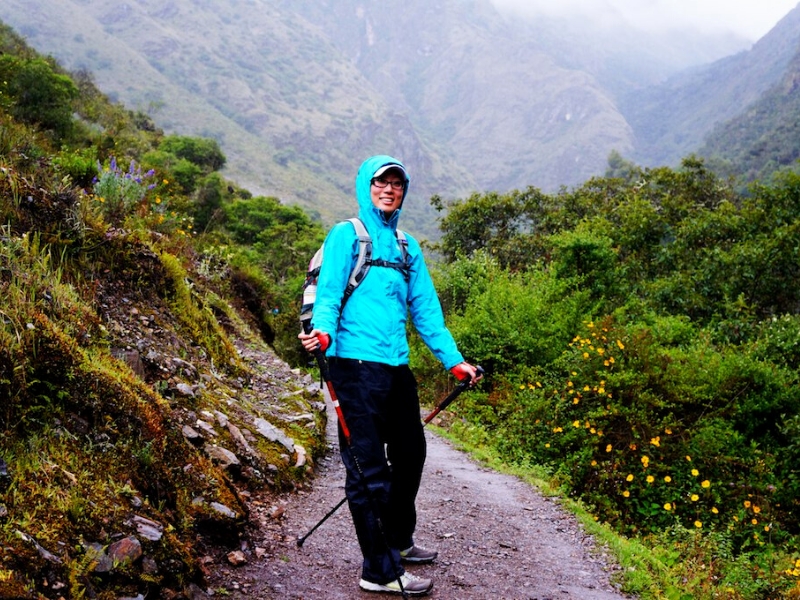
“Your inspiration for a trip can be a single word or a highly evolved outline, but it’s the conversations we have that help us understand the experience you’re looking for. Meanwhile, I’m looking back on the time I spent at the destination.
‘The great thing about working with a specialist at Andean Great Treks is how they take your complete jumble of ideas and turn them into something absolutely spectacular.’
As you begin to share your ideas with your specialist, it will connect them immediately back to a time in their own travels. Conjuring a picture of the rest time they made that same discovery, reminding them how it felt.
Your specialist understands that, when the journey is right, it has the power to excite your emotions in the most profound ways after all, that was the effect on them.
They carry a treasure box of moments, captured over many journeys, into every suggestion they’ll share with you, as they ask you how you want to feel on your trip.
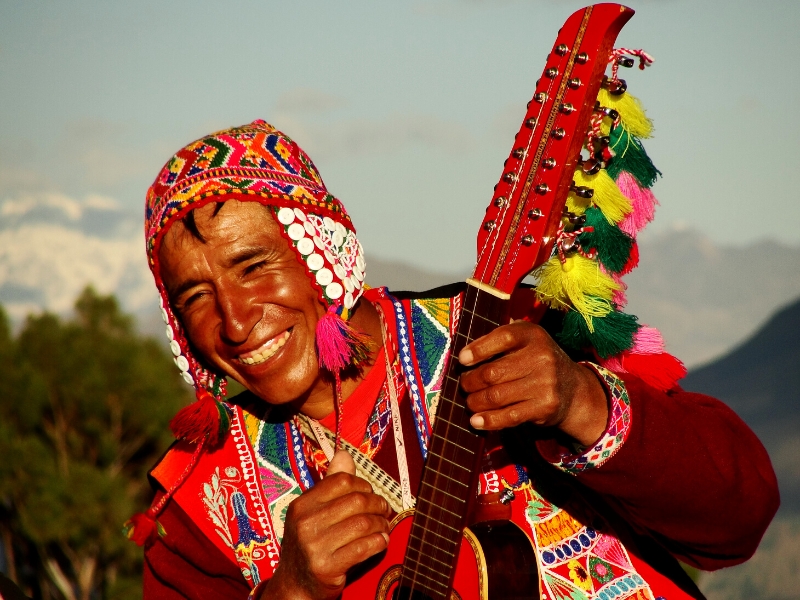
EXPERIENCES THAT CALL TO YOU
It’s what you do in a destination that helps bring it to life. It’s why we strive to choose experiences that help you connect to a place, absorbing a little of its complex character. Wherever your passions lie, we’ll recommend experiences that speak to you, and we’ll recommend the guide or local expert who’s most qualified to help you explore. Packing your holiday full of special experiences means some early starts and long days, but you can be sure that you’ll return home with many incredible memories! Read our Tours and check the Physical Ratings to see if the pace and activity levels are right for you.
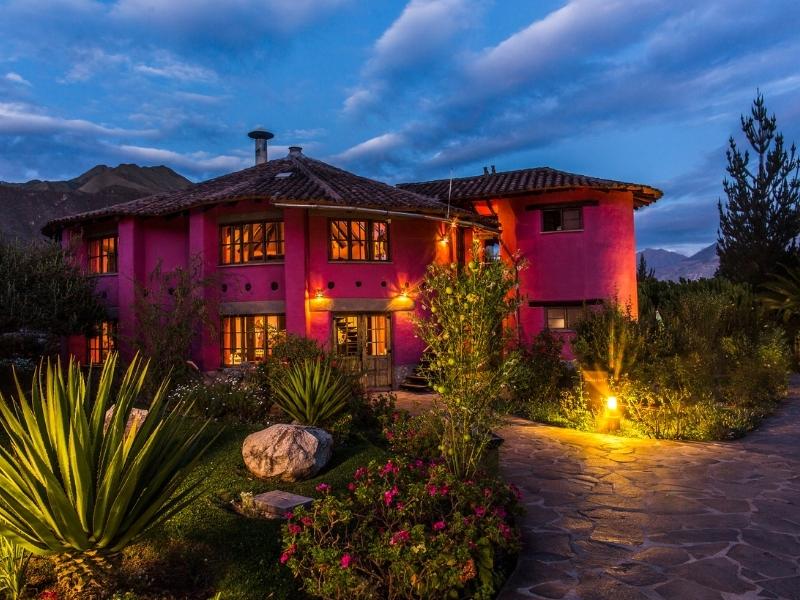
STAYS WITH DIFFERENCE
We know that where you stay is a cherished part of your travels. So, we go to great lengths to find places to stay that exceed expectations, or go above and beyond the ordinary, whether in their character, hospitality, or location. Over the years, we’ve discovered the very best properties, trying and testing them, so we can choose the right one for you. We’ve nourished long-standing relationships with these establishments and the people who founded them, and we’ve stayed there many times often, we’ll even know which rooms have the best views (and reserve them for you).
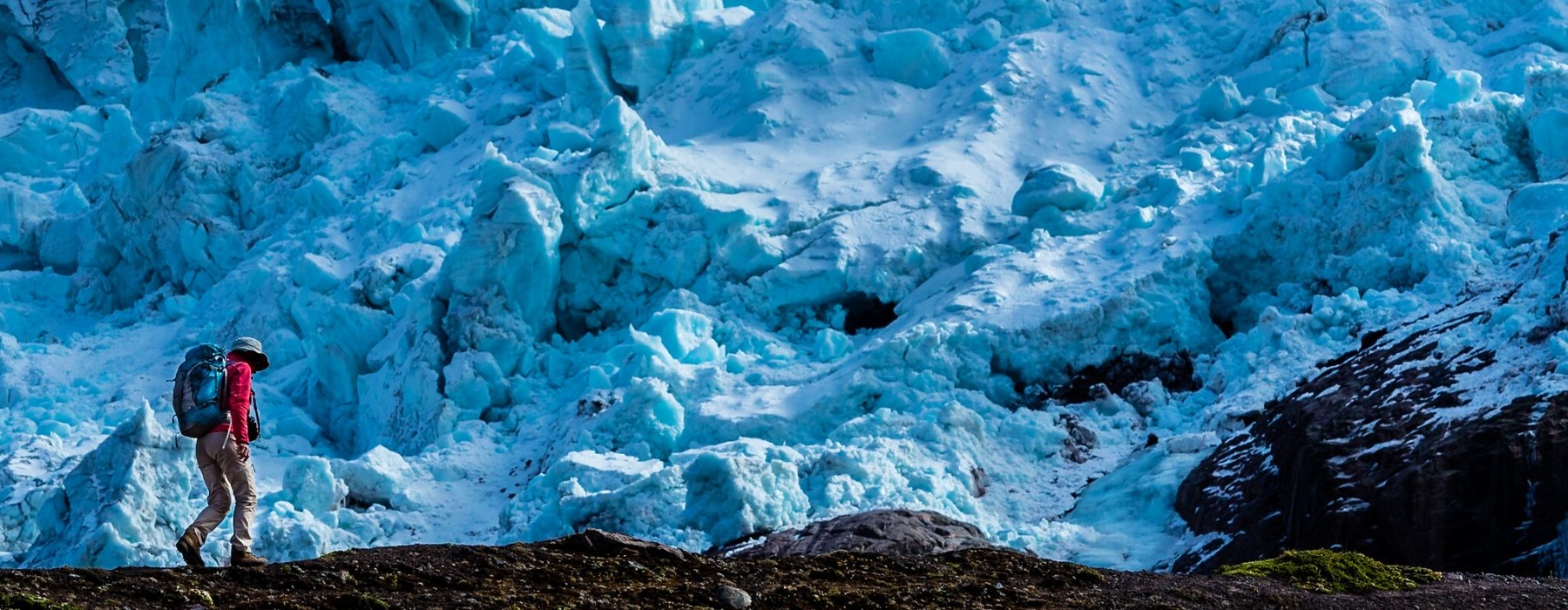
Our style of travel — authentic, thoughtful, and focused on building meaningful connections to the people and places you visit — is inherently respectful and considerate of the destinations we love. We design each aspect of your trip exactly as you want it, which includes its sustainability. That might mean choosing a train journey instead of a flight, staying at eco-friendly wildlife lodges, or opting for experiences that give back to the communities you’re visiting. The choice is yours.
Responsible travel has always been at the heart of what we do. First and foremost, because it gives you the best experience, but, also because it helps to preserve the communities and landscapes you visit. This isn’t new for us we collaborated with local communities and outside experts so we can grow to be better ambassadors.
The most authentic and interesting experiences often directly benefit the local people. We prefer to buy local products that are produced in the organic farms of the Sacred Valley, we also have alliances with local artisan organizations who provide us with souvenir items for our clients, your money directly benefits the local economy.
Our style of travel — authentic, thoughtful, and focused on building meaningful connections to the people and places you visit — is inherently respectful and considerate of the destinations we love. We design each aspect of your trip exactly as you want it, which includes its sustainability. That might mean choosing a train journey instead of a flight, staying at eco-friendly wildlife lodges, or opting for experiences that give back to the communities you’re visiting. The choice is yours.
Responsible travel has always been at the heart of what we do. First and foremost, because it gives you the best experience, but, also because it helps to preserve the communities and landscapes you visit. This isn’t new for us we collaborated with local communities and outside experts so we can grow to be better ambassadors.
The most authentic and interesting experiences often directly benefit the local people. We prefer to buy local products that are produced in the organic farms of the Sacred Valley, we also have alliances with local artisan organizations who provide us with souvenir items for our clients, your money directly benefits the local economy.
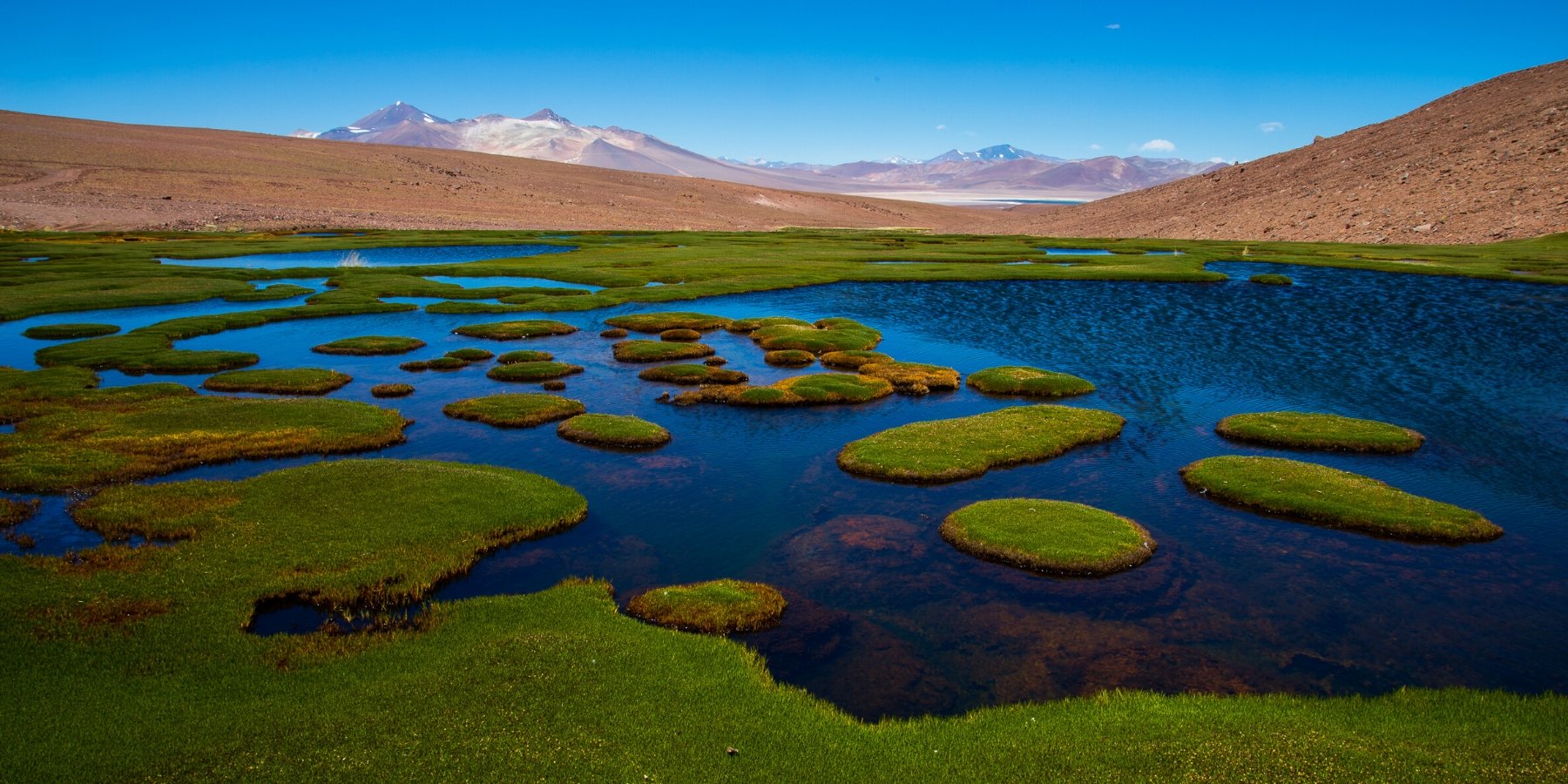
‘There’s a saying: we don’t inherit the Earth from our ancestors, we borrow it from our children. When we show you our country, this philosophy guides everything we do. It’s our responsibility to preserve the environment and wildlife, and support communities. That means using slower modes of transport, like cycling, employing local people, and working with communities who’ll benefit directly from your visit. This also gives you the best, most authentic impression of the places we want to share with you.
We prefer to buy local products in ecological bags, to avoid the use of plastic bags, likewise we teach the use of soaps and ecological products in each tour that we organize. We also work on reforestation projects with local communities who take care of landscape resources such as communal reserves, national parks.
‘There’s a saying: we don’t inherit the Earth from our ancestors, we borrow it from our children. When we show you our country, this philosophy guides everything we do. It’s our responsibility to preserve the environment and wildlife, and support communities. That means using slower modes of transport, like cycling, employing local people, and working with communities who’ll benefit directly from your visit. This also gives you the best, most authentic impression of the places we want to share with you.
We prefer to buy local products in ecological bags, to avoid the use of plastic bags, likewise we teach the use of soaps and ecological products in each tour that we organize. We also work on reforestation projects with local communities who take care of landscape resources such as communal reserves, national parks.
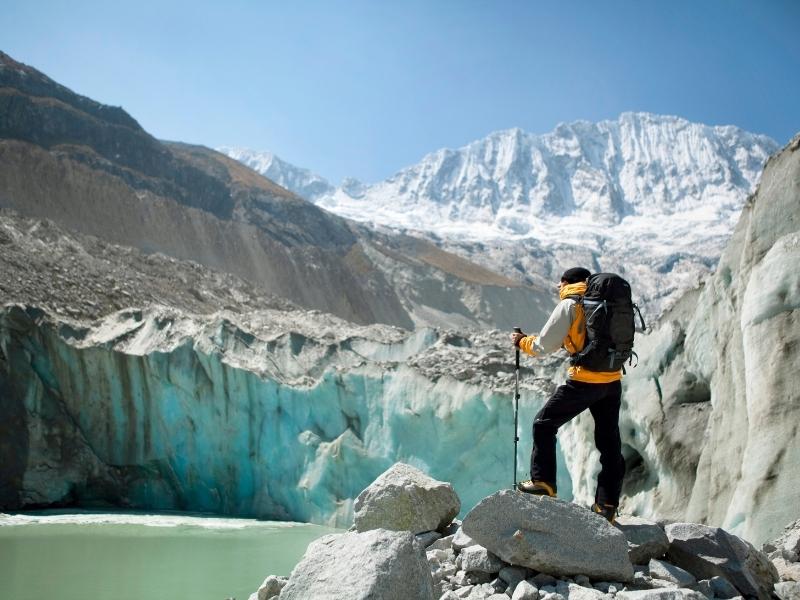
The Quelccaya glacier is located in the southeast of Peru, in the Cusco region, it is the most extensive tropical glacier in the world, Quelccaya is a majestic glacier.
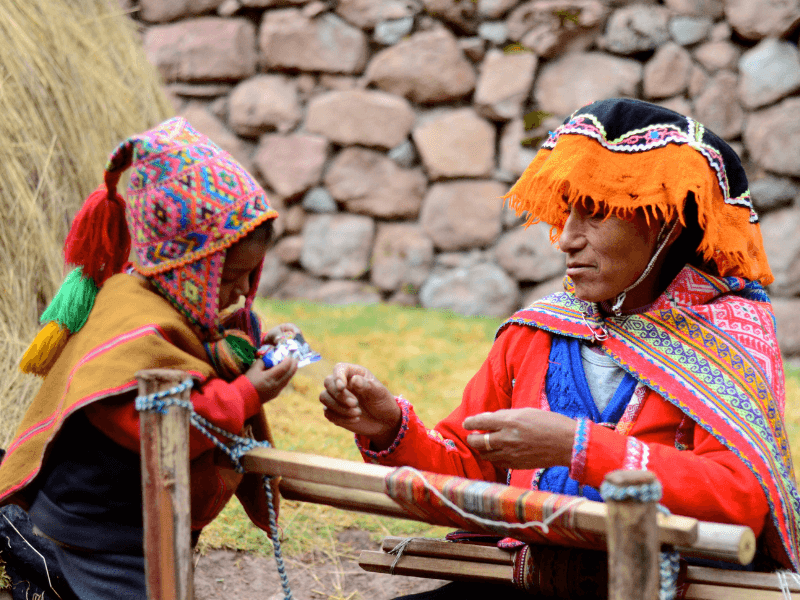
Embark on an incredible Cusco Andean exploration through Lares trek with a taste of the iconic Inca Trail to Machu Picchu, through the Sacred Valley of the Incas.
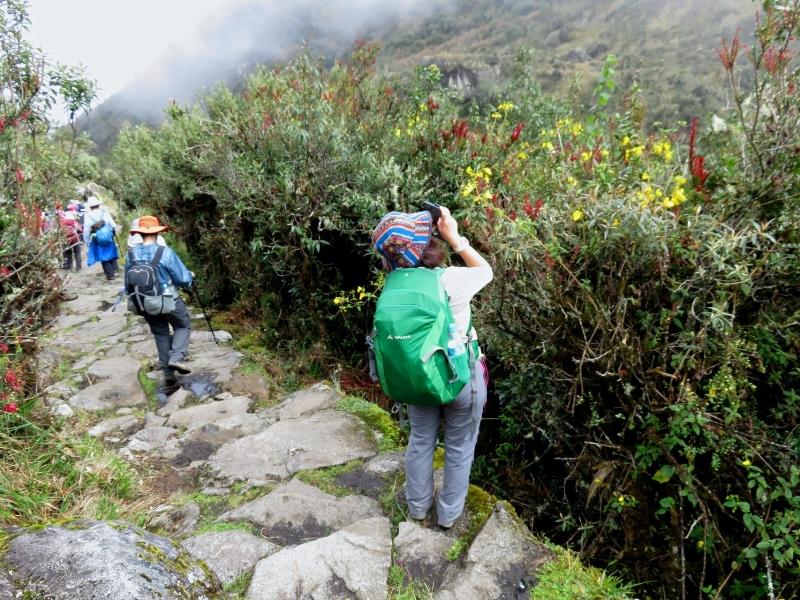
Ancascocha Trek & Classic Inca Trail to Machu Picchu will take you through beautiful landscapes and snowy mountains surrounded by colorful lakes and waterfalls. You will discover ancient inca ruins, local flora and fauna of Machu Picchu.